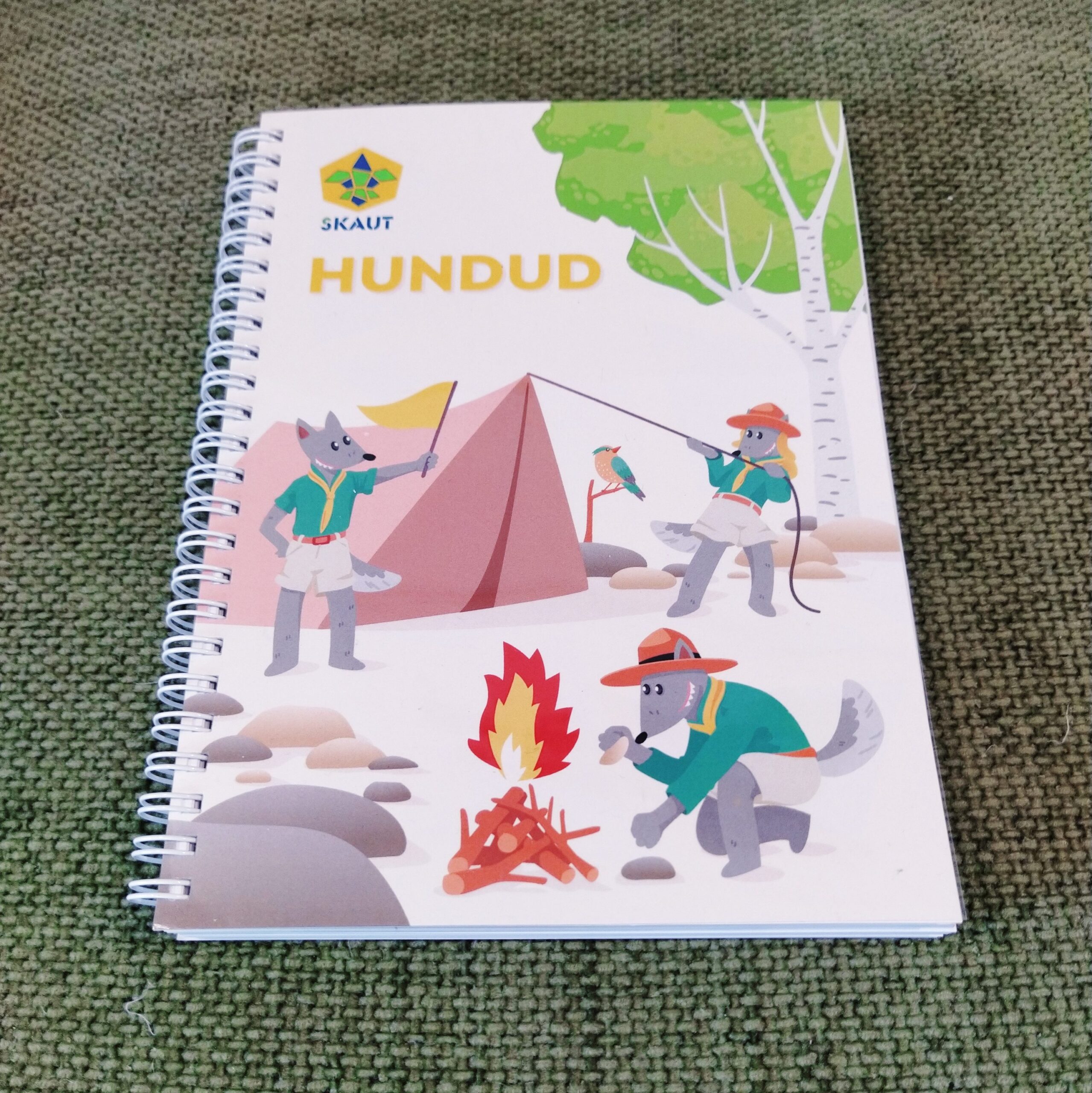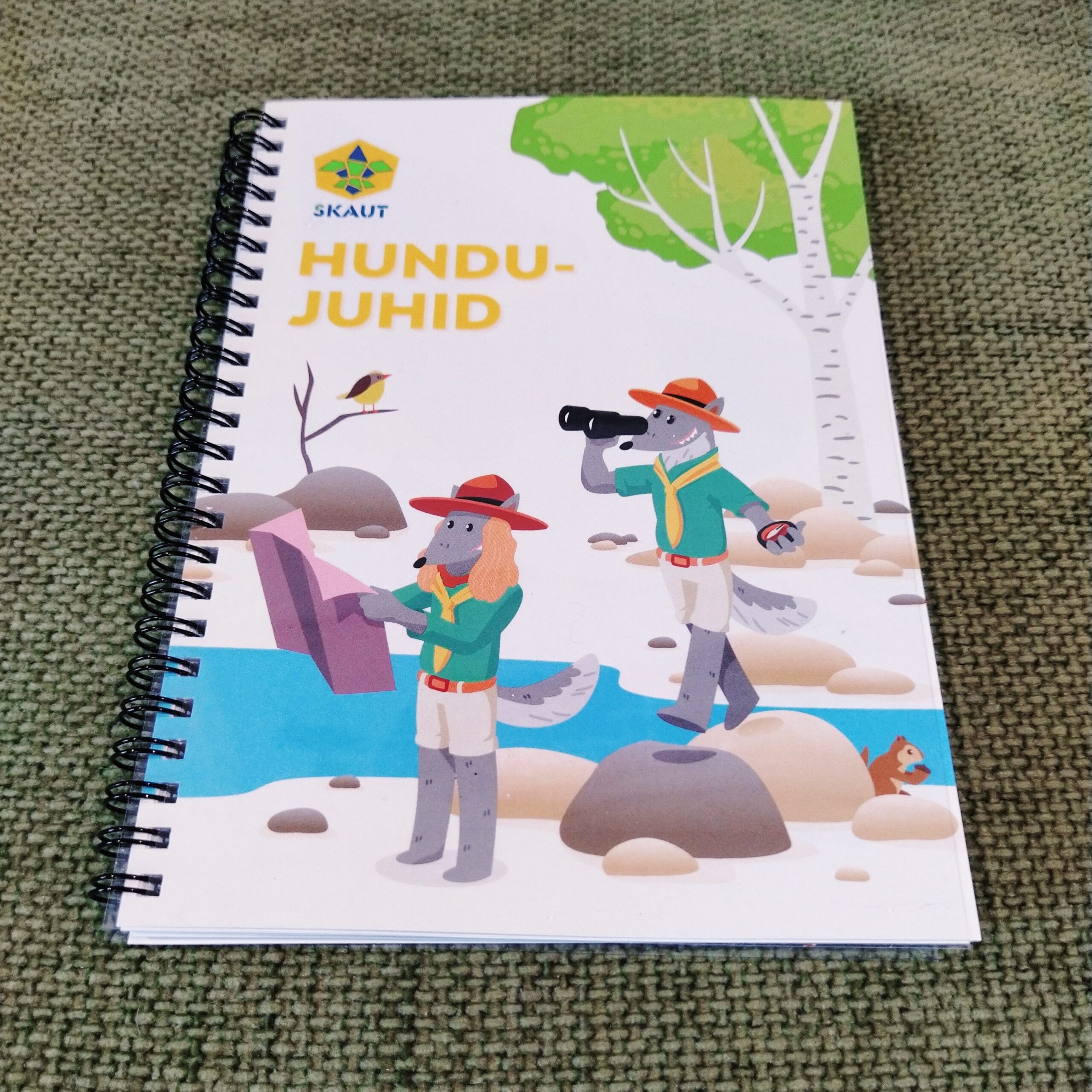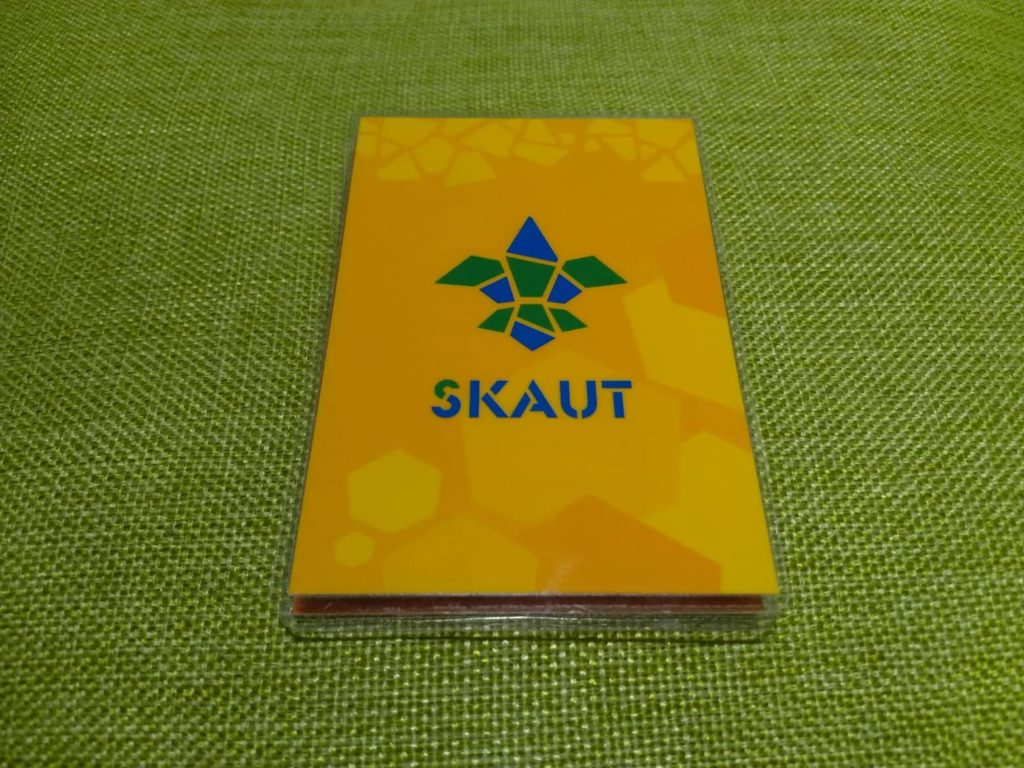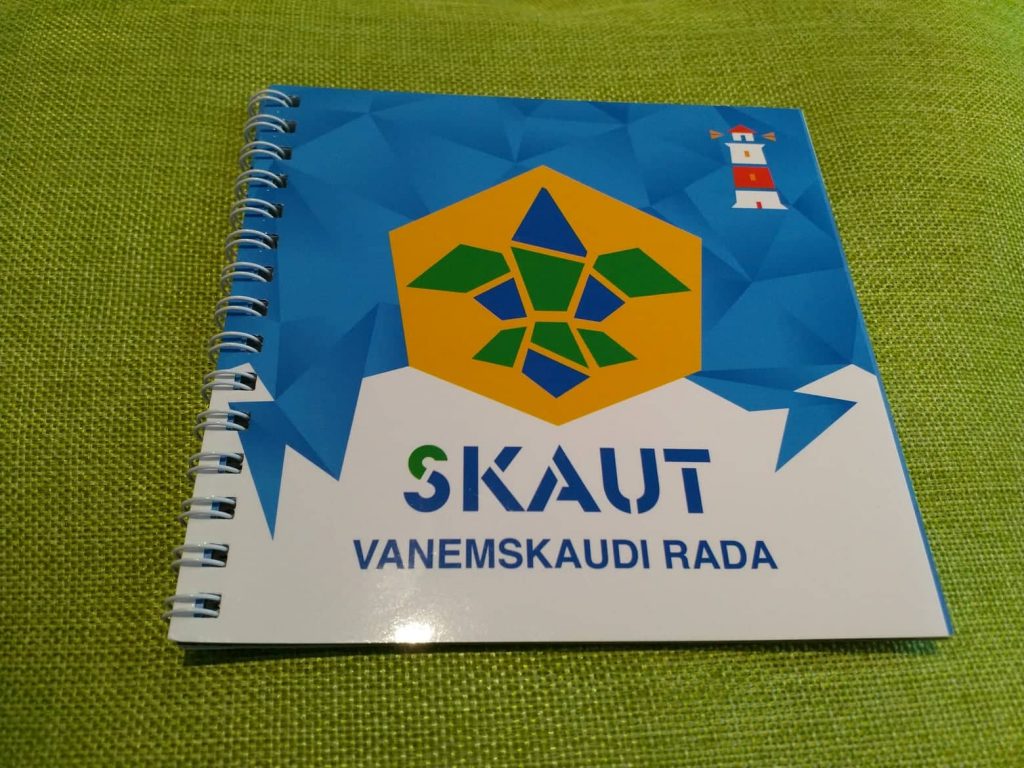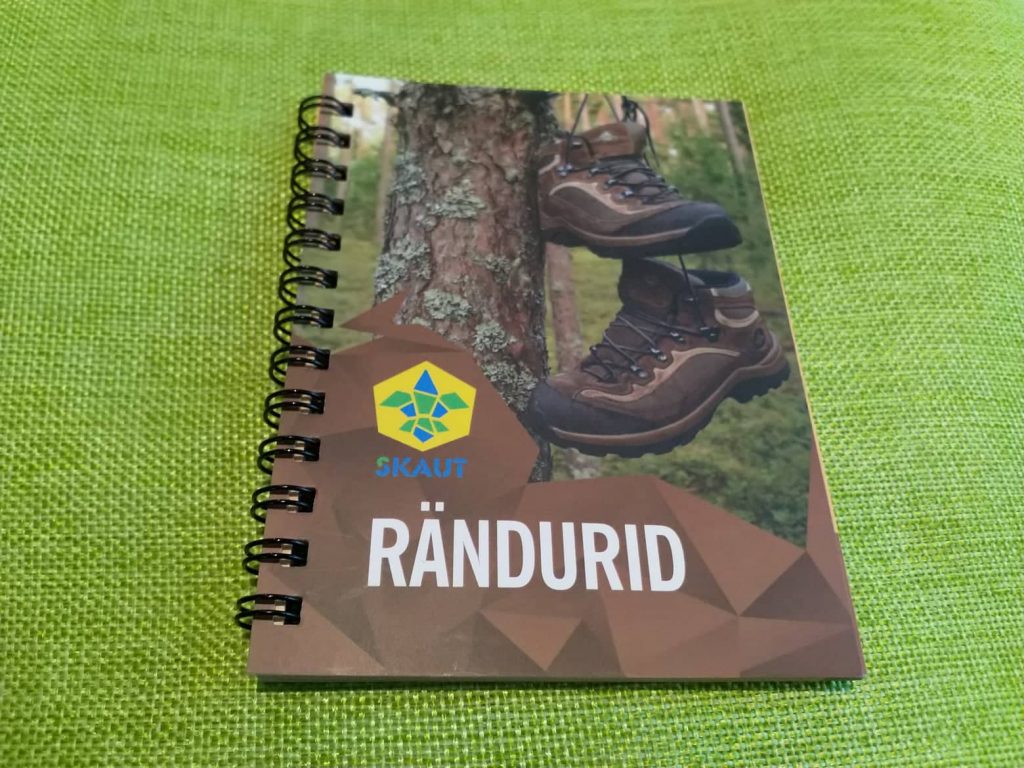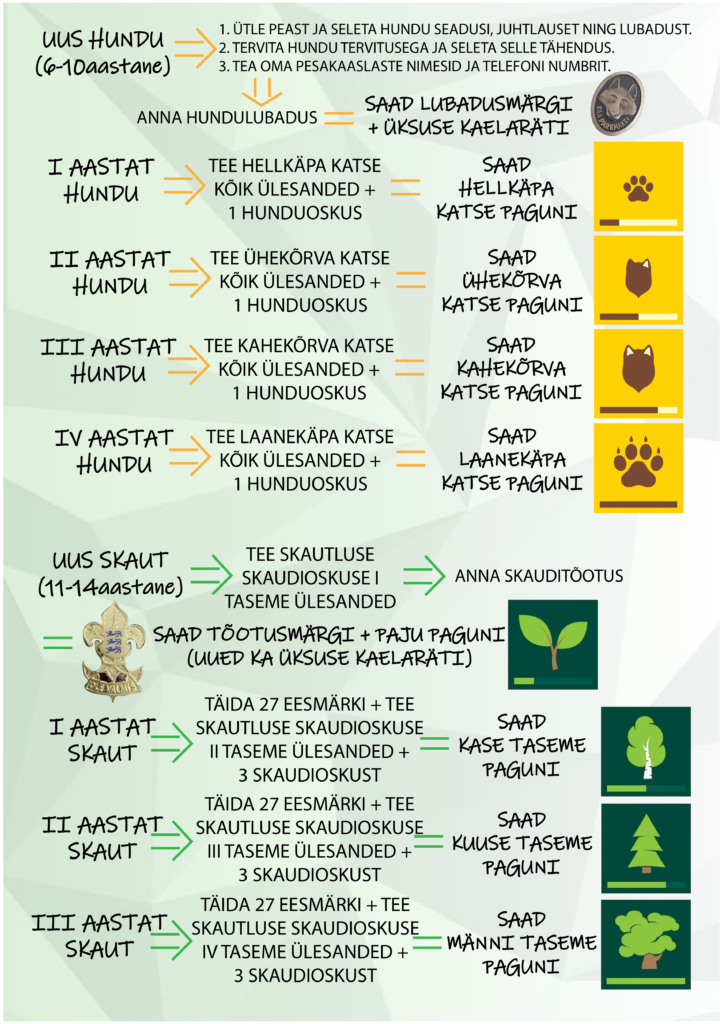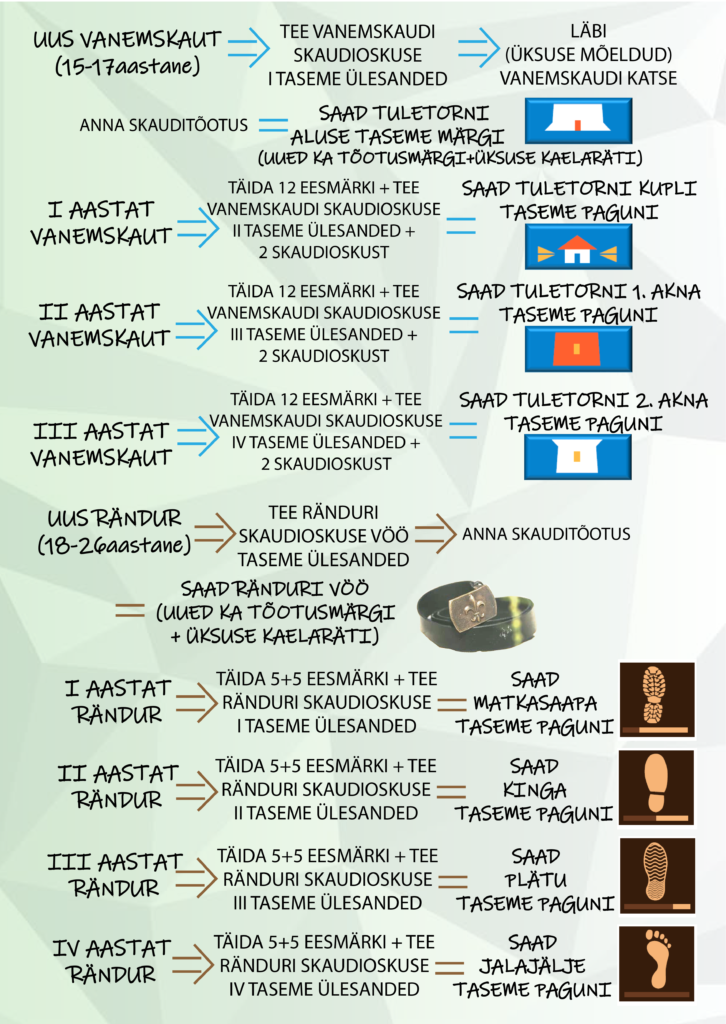Estonian Scout Association

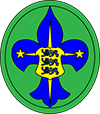
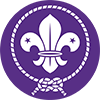
The Estonian Scout Association, or ESÜ, is a nationwide youth organization providing non-formal education for young people, which is part of the global Scout movement with over 50 million members. ESÜ was established on the 10th of June 1995 and became a member of the World Organization of the Scout Movement (WOSM) on the 17th of January 1996.
Our aim is to create a diverse environment for the young people living in Estonia, providing them with the courage to test themselves, identify their strengths, and develop into active, capable, and tolerant members of the community. To acomplish this, we do our best to develop the youth sector in Estonia, actively collaborating with the Estonian government institutions and non-governmental organizations related to the youth sector. ESÜ adheres to the ethical code of non-profit organizations and uses best practices of fundraising.
ESÜ development plan 2021-2028
History of Scouting
The Beginning of Scouting and its Founder Sir Robert Baden-Powell
The Scouting movement originated in England, and its creator was the British Army General Robert Stephenson Smyth Baden-Powell (known as B-P) (22nd February 1857 England – 8th January 1941 Kenya).
Due to his profession as a military officer, B-P traveled to various parts of the world, and from the wisdom he gathered during his service, he wrote a manual for military scouts called “Aids to Scouting” in 1899. Surprisingly, the same book gained immense popularity among youth, with boys all over England imagining the Boer War and engaging in scouting games. The afore mentioned work also became a manual for the Boys’ Brigade, a boys’ organization operating in England. Encouraged by the success of his writing among the youth, B-P was inspired to write a new book, this time intending it directly for boys.
Having served in a leadership position in the military, he had realized that it was not possible to build strong character in people through command alone, and it was practically impossible to reshape the worldview of an adult. Therefore, he decided to direct his proposed educational system towards children, aiming to cultivate them into valuable citizens for their homeland. However, his experiences were derived from wartime situations, and to write such a book, he needed to immerse himself among the boys. Thus, he gathered around him a group of twenty English boys from different social classes and took them to a small English island (Brownsea Island) in the summer of 1907, where he organized the first Scout camp. The principle of the activity became learning by doing. The event was a great success, and even before the publication of the new book, news of the successful boys’ camp spread across England, and all adventure-seeking boys (as what boy isn’t adventurous!) wanted to become Scouts.
The eagerly anticipated book was published in the spring of 1908 under the title “Scouting for Boys.” It can be said that the book is timeless and can still be effectively used in the present day. It was quickly translated into other languages, and thus other countries also became aware of this innovative youth movement. The magazine “The Scout” also began to be published.
More and more Scout units emerged, and B-P felt that he could be more useful to society by engaging in the Scouting movement rather than as a military officer. Thus, he decided to give up his active military officer position and devote all his efforts to the creation of a new and vibrant organization.
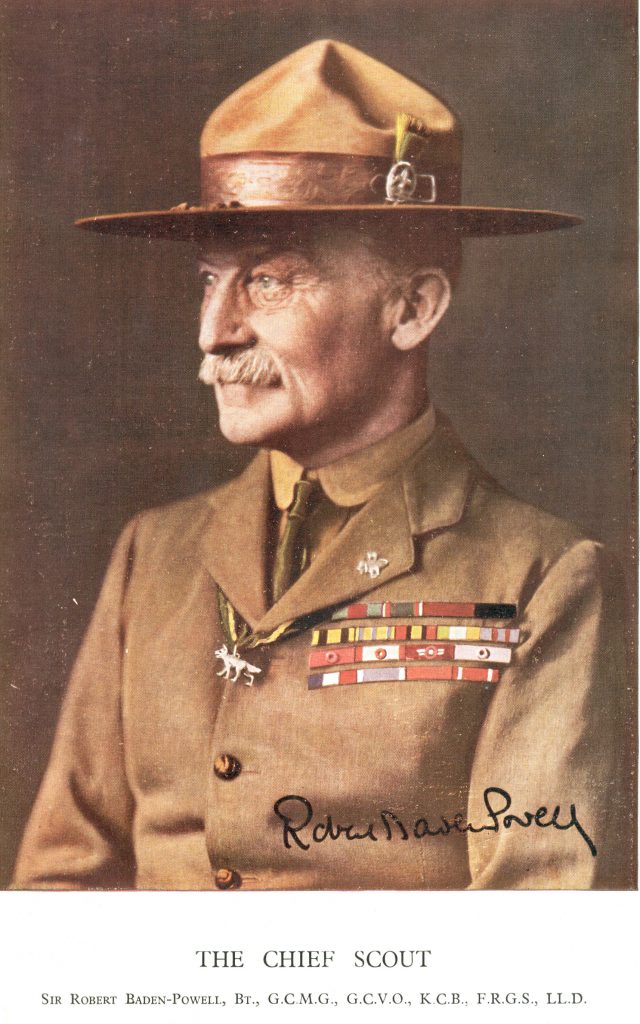
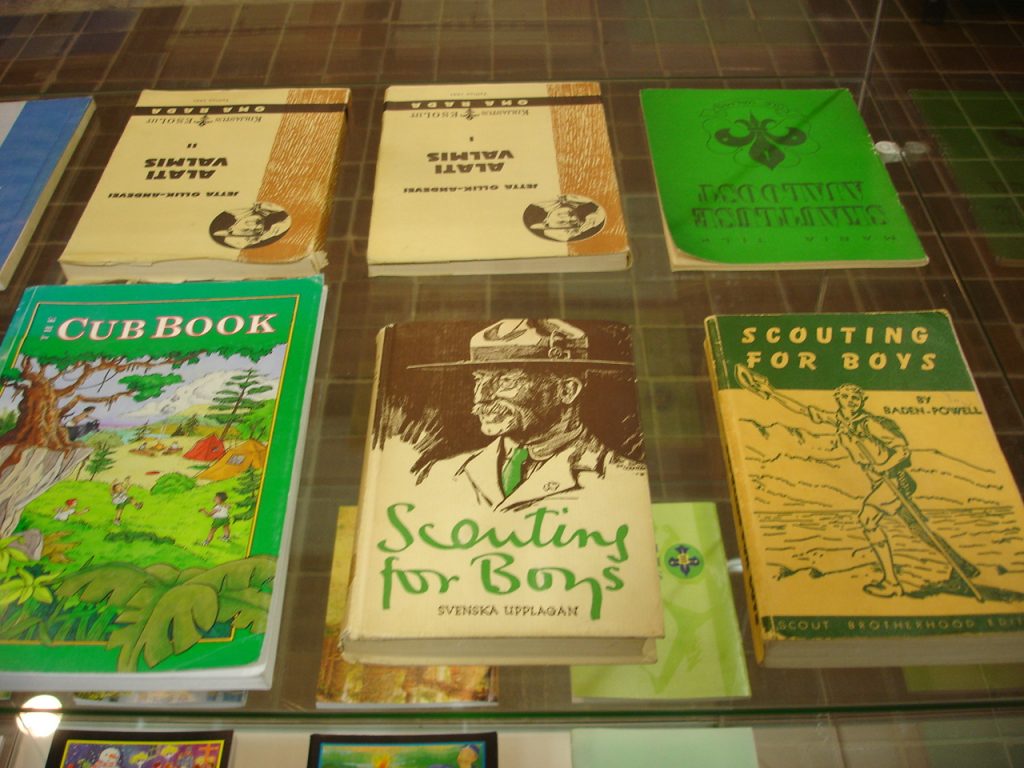
The following year, in 1909, “Scouting for girls” or guiding (from the English word “guide,” to show the way) was created. According to the customs prevailing at that time, it was not possible to unite boys and girls in the same organization. These boundaries have now disappeared, and no gender distinction is made. Both boys and girls can belong to both Scout and Guide organizations, unless the organization in the country of residence has stipulated otherwise (for example, due to religious practices in India).
Scouting as a Leading Youth Movement and the Formation of WOSM
Scouting spread rapidly to many countries within a short period, quickly reaching Estonia between 1911 and 1912.
Development and Expansion of Scouting:
- 1916 – the youngest level of Scouting: Cubs, typically boys aged 8 to 12;
- 1918 – for boys outgrowing the Cub phase: Boy Scouts, young men aged 16 to 20;
- 1925 – handicap Scouting, designed for boys with physical disabilities.
In August 1920, representatives of Scouts from various countries gathered in London with the aim of establishing a global Scout organization. Two years later, in 1922, they convened in Paris and established the WOSM (World Organization of the Scout Movement), with Estonia, freshly independent at the time, among its founding members. B-P was chosen as the Chief Scout of the world.
Scouting became the most recognized and acclaimed youth movement in the world, and many people have been a part of it. Most individuals experience it in their younger years, but there are also those who remain actively involved for their entire lives. B-P is credited with the saying, “Once a Scout, always a Scout!”
Scouting and World Politics
Although one of the fundamental principles of Scouting is non-political involvement, it was not immune to the political tragedies that struck the world in the 20th century – wars and subsequent occupations.
While Scouting prospered in the free world, in dictatorships, Scouting that was deemed unsuitable for the regime was banned. For example, in Russia after the Communist Revolution and in Germany after the rise of the National Socialists. Scouting in these countries was replaced by youth organizations that somewhat imitated Scouting – the Pioneer Organization in Soviet Russia and the Hitler Youth in Germany. However, the education in these organizations was aimed at creating not individuals who are tolerant of others, but obedient cogs for the dictatorial state.
The same fate befell Estonia in 1940 and many Eastern European countries starting from 1939, when occupying authorities banned Scouting organizations. Scouting continued in exile, while in the homeland, it had to operate clandestinely.
After the fall of the dictatorships, Scouting organizations in these countries have regained prestige and are increasingly gaining popularity and membership.
Scouting Today, WOSM Regions, and JOTA-JOTI
Currently, there are approximately 40 million Scouts – girls and boys – in 216 countries and territories worldwide. WOSM includes over 155 national Scout organizations as of now. The main prerequisites for WOSM membership are the size of the local national organization, which must exceed 1000 members, having an economic base to serve its members and fulfill the obligations set by WOSM, and the expectation of territorial national independence where the organization is located (the latter is legally necessary). Regardless of the size of the countries, all members have equal voting rights within the organization.
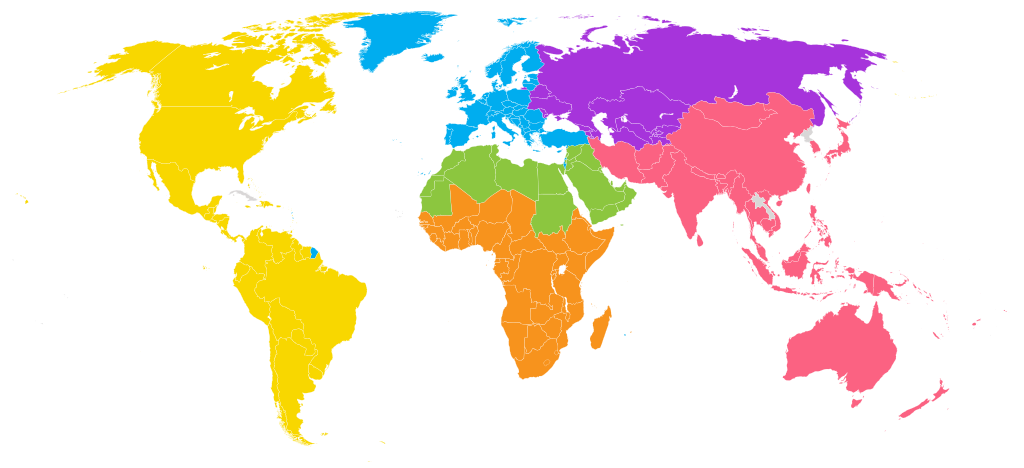
WOSM is divided into six regions: Europe, Arabia, Africa, Asia-Pacific Ocean, Inter-America and Eurasia
From the early days of Scouting, there is a tradition that every four years, a worldwide Scout camp, known as the World Scout Jamboree, takes place. The attempt of these events is to be organized in diverse locations around the world when possible.
With the arrival of the information age and the gradual emergence of the information society, Scouting has also found its expression on the internet: Scout mailing lists, pen-pal correspondences via email, and unit and organization websites.
The first online Jamboree, Jamboree On The Internet (JOTI), took place on October 18-19, 1997, during which Scouts from all over the world attempted to have as much direct contact as possible through the internet.
Amateur radio has also been popular among Scouts for quite some time. The first Jamboree On The Air (JOTA) took place in 1957 and has been held every year since then on the third weekend of October. As a result, the timings of both JOTI and JOTA are synchronized to the same period.
How Scouting Reached Estonia
The founder of Scouting in Estonia was Anton Õunapuu.

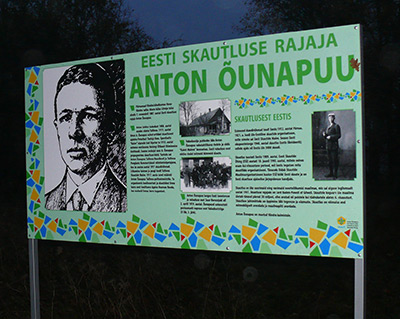
In addition to him, others also spread the ideas of Scouting in Estonia. In 1911, boys from Tallinn’s St. Peter’s School of Real Education attempted to establish their own unit, but due to little interest, the idea was abandoned. The first officially registered unit began operating in Pärnu in 1912. The number of members there was up to 30 Scouts, and the boys’ ages ranged from 12 to 17. Meetings were held at least once a week, with the language of communication being Russian, although Estonian and German were also spoken among them. In 1917, the Germans bombed Pärnu, and the gymnasium where the boys studied was evacuated. Prior to that, Russian soldiers had ransacked the Scouts’ home and scattered their belongings. As a result, the Scouting activity there, which had lasted for five years, came to an end. Scout groups emerged in various parts of Estonia between 1916 and 1917.
Why Scouting Emerged in the First Place
Due to the development of human society (urbanization, the spread of urban lifestyle), there was a growing need for a youth movement like Scouting. Something similar would likely have emerged anyway, but B-P knew how to give Scouting a good outlet: education through activities in which children themselves enthusiastically participate, in addition there are principles which are valued and understandable to everyone. Scouting has been suitable through times and is still suitable for people of different nationalities, religions, and social classes, especially because Scouting has never imposed restrictions on hobby activities – in Scouting, one can learn and practice almost any activity or interest (for example, sea Scouts). This is where the universality of Scouting lies.
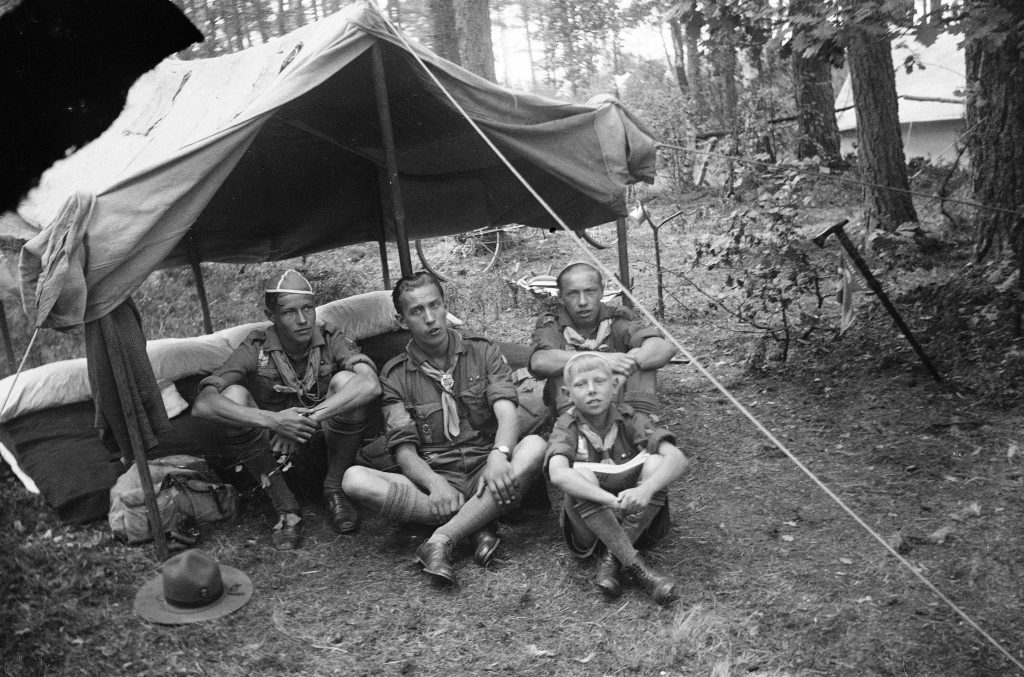
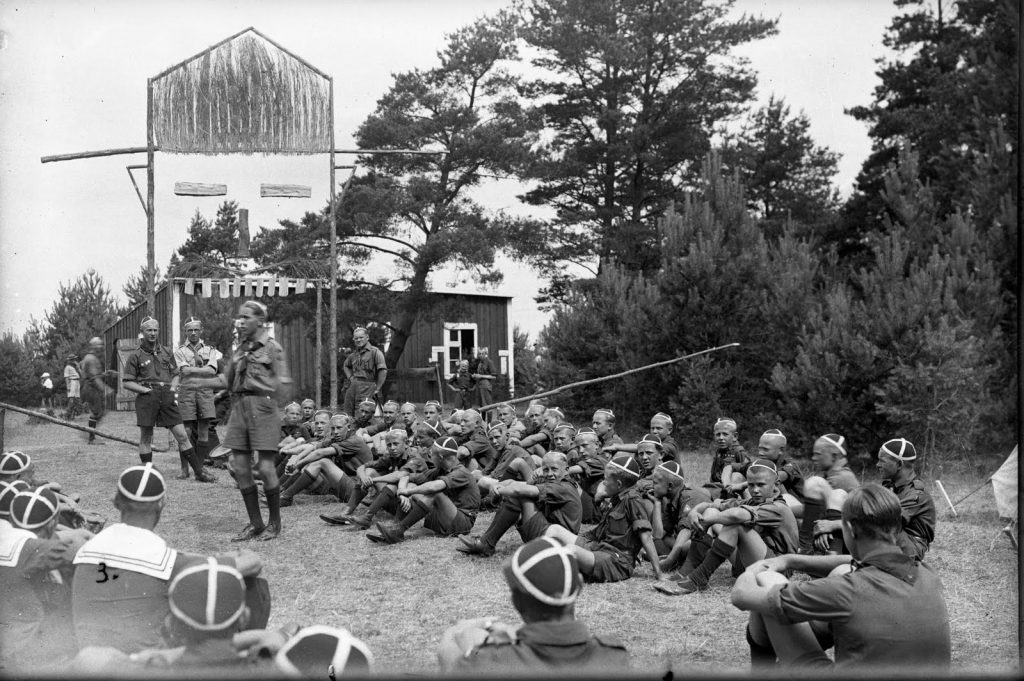
Milestones of Scouting: Important Dates
1907 Robert Baden-Powell (B-P) organized the first Scout camp on Brownsea Island in England (Patrols: Wildcats, Bulls, Curlews, and Ravens)
1909 The first Scout units outside the British Empire were established in Chile
1909 Girl Guides was established for girls as it was not possible to integrate boys and girls into the same organization according to the customs of that time
1911 The first article about Scouting appeared in the Estonian press, authored by Anton Õunapuu
1912 The first Scout unit was founded in Pärnu, Estonia
1916 The first Scout units emerged in Tartu
1916 Cubs were established
1917 The first Scout units were formed in Tallinn
1918 Rover Scouts were established
1919 Anton Õunapuu fell in the War of Independence
1919 The 1st Gilwell Course, the highest training for Scout leaders (Wood Badge)
1919 The Estonian Scout Headquarters was established, with Arnold Tols as its leader
1920 1. maailmajamboree Inglismaal Londonis (8000 osalejat, sh 10 eestlast)
1920 B-P was appointed Chief Scout of the world
1921 The Estonian Scout Troop (ESM) was established in Tartu, with Leopold Tõnison as its leader
1921 The publication “Eesti Skaut” (Estonian Scout) began
1921 Nikolai Kann (later Minister of Education and Social Affairs) was elected as the leader of the Estonian Scout Troop
1922 WOSM (World Organization of the Scout Movement) was founded
1922 Rovers were established
1925 Handicap Scouting for young people with physical disabilities was introduced 1926 – The Estonian Scouts’ (ESM) 1st large camp took place in Pirita (with over 400 participants)
1926 The Estonian Scouts’ (ESM) 1st large camp was held in Pirita (with over 400 participants)
1932 The Estonian Scouts’ (ESM) 2nd large camp was held in Valgeranna (with nearly 800 participants)
1936 The Estonian Scouts’ (ESM) 3rd large camp took place in Paralepa (with over 2000 participants)
1938 B-P retired from Scouting and moved to Kenya
1940 The activities of the Estonian Scout Troop were terminated due to the occupation of Estonia
1941 B-P died at the age of 83 in Kenya, Africa
1944 The first Estonian Scout units were established in Sweden
1945 The first Estonian Scout units were formed in Germany
1946 The Central Bureau of the Estonian Scout Association was established to lead Estonian Scouting abroad, with Herbert Michelson as the Secretary-General
1946 The Scouting magazine “Tulehoidja” (The Torchbearer) began publication in exile
1949 The organization “Eesti Skaudid Paguluses” (Estonian Scouts in Exile) was established
1949 Estonian Scout units began operating in Canada, Australia, and America
1954 “Eesti Skaudid Paguluses” was renamed the “Estonian Scout Association”
1962 The 1st international Scout jamboree for Estonian Scouts, “World Camp,” and the Girl Guides’ jamboree, “Horizon,” took place in Kotkajärve, Canada, laying the foundation for the later idea of the global ESTO days – look at the article
1972 The title of the “Secretary-General” of the Estonian Scout Association was changed to “Chief Scout”
1972 The largest international Estonian World Camp “Kotkajärve” in Canada, with over 2000 participants
1988 The first Scout units were re-established in Estonia
1989 The Estonian Scout Troop was reestablished, with Richard Tõnnus as the Chief Scout
1989 The Estonian Eesti Boys’ Association (led by Leho Männiksoo) was transformed into the Estonian Eesti Scout Association, with Andres Haamer as its leader
1990 Tõnu Aavasalu was elected as the Chief Scout of the Estonian Scout Troop
1990 The publication “Eesti Skaut” resumed
1992 The 4th Estonian Scout Troop (ESM) large camp took place in Matsiranna, Pärnumaa
1993 The 1st Gilwell (Wood Badge) course in Estonia was held
1993 The Estonian Scout Troop and the Estonian Eesti Boys’ Association merged, with the combined organization named the Estonian Scout Troop and Tõnu Aavasalu as the Chief Scout
1995 The Estonian Scout Association (ESÜ) was established, with Tõnu Aavasalu as the Chief Scout
1995 The 5th large camp of the Estonian Scouts (ESÜ) took place in Tagametsa
1996 The ESÜ became a member of WOSM
1997 Kristjan Pomm was elected as the Chief Scout of the ESÜ
1998 The 6th large camp of the Estonian Scouts and Girl Guides (ESÜ + EGL), “Forest Book,” took place in Tagametsa
1999 The ESÜ purchased the Tagametsa hunting lodge and its surrounding land
2000 The most recent international Estonian World Camp in Canada’s Kotkajärve
2001 The 7th large camp of the Estonian Scouts and Girl Guides (ESÜ + EGL), “Tribal Bridge,” took place in Tagametsa
2003 The ESÜ office moved to Lembitu Street in downtown Tallinn
2005 The 8th large camp of the Estonian Scouts and Girl Guides (ESÜ + EGL), “Wanderland,” took place in Tagametsa
2006 The ESÜ received a gift of land in Kihelkonna, Saaremaa
2006 Siimon Haamer was elected as the Chief Scout of the ESÜ
2007 The 100th anniversary of Scouting was celebrated worldwide, marked by the renewal of the global Scout Promise on August 1st
2009 The 9th large camp of the Estonian Scouts and Girl Guides (ESÜ + EGL), “Starwood,” took place in Tagametsa
2010 Jüri Ehandi was elected as the Chief Scout of the ESÜ
2013 The 10th large camp of the Estonian Scouts (ESÜ), “The World Begins with Me” or MAM, took place in Tagametsa
2013 Kristjan Pomm was elected as the Chief Scout of the ESÜ
2017 The 11th large camp of the Estonian Scouts (ESÜ), “Adventure Wheel,” took place in Tagametsa
2017 Tallinn Scout House was completed on Juurdeveo Street, where the ESÜ office also moved
2021 Siim Maripuu was elected as the Chief Scout of the ESÜ
2021 The 12th large camp of the Estonian Scouts (ESÜ), “The Octopod,” took place in Tagametsa.
Famous Scouts in Estonia and Worldwide
In Estonia:
Toomas Hendrik Ilves – president of the Republic of Estonia (USA Lakewood Kalevipoeg Troop)
Leho Männiksoo – radio and print media journalist (Ecological Scouts Troop)
Tiit Terik – politician and Member of the Estonian Parliament
Taavi Rõivas – politician and Member of the Estonian Parliament, former Prime Minister
Lauri Läänemets – politician and Member of the Estonian Parliament, former Mayor of Väätsa (Ecological Scouts Troop)
In the USA:
Neil Armstrong – astronaut – first person on the moon (Eagle Scout)
Bill Clinton – president of the United States (Cub Scout)
Gerald Ford – president of the United States (Eagle Scout)
Harrison Ford – actor (Life Scout)
Bill Gates – co-founder of Microsoft (Life Scout)
John F. Kennedy – president of the United States (Star Scout)
Jim Morrison – rock legend, lead vocalist of The Doors
Steve Fossett – American millionaire, circumnavigator (Eagle Scout)
Donald Rumsfeld – United States Secretary of Defense (Eagle Scout)
Steven Spielberg – film director (Eagle Scout)
Richard Dean Anderson – actor, MacGyver
Jimmy Carter – president of the United States
Ronald Reagan – president of the United States (Scout leader)
Barack Obama – president of the United States (Cub Scout)
In the United Kingdom:
John Major – former Prime Minister
Sir Paul McCartney – composer, guitarist, and vocalist of The Beatles
George Michael – musician
Keith Richards – musician, guitarist of The Rolling Stones
Sir Cliff Richard – musician
David Bowie – musician
David Beckham – footballer
Tony Blair – prime Minister of the United Kingdom
Bear Grylls – adventurer and TV personality, author of survival shows, Chief Ambassador of World Scouting
Elsewhere in the world:
Nelson Mandela – president of South Africa
Carl XVI Gustav – King of Sweden (actively involved in Scouting to this day)
Ingvar Carlsson – former Prime Minister of Sweden
Jacques Chirac – president of France
Valdas Adamkus – president of Lithuania
Juan Carlos I – King of Spain
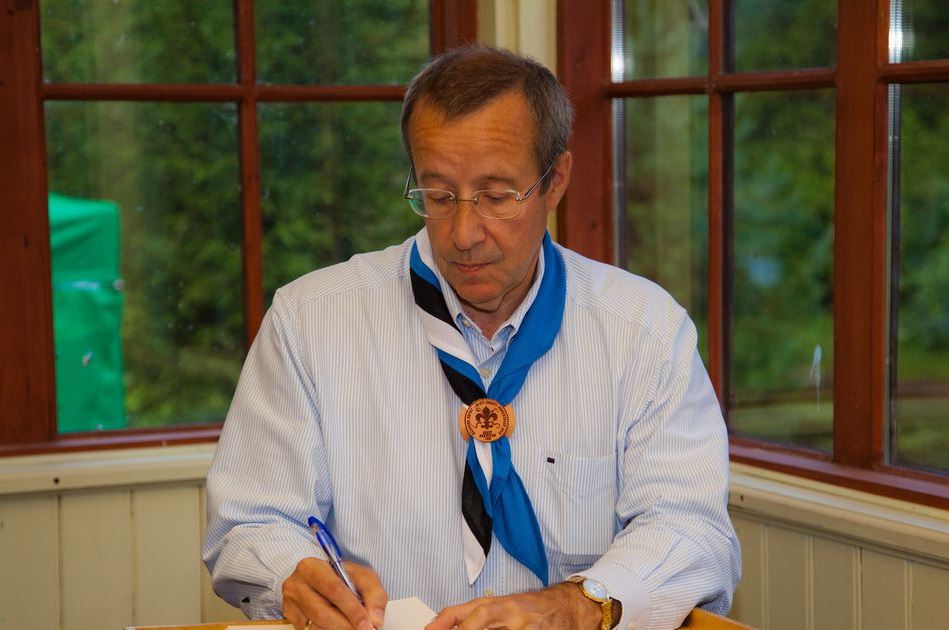
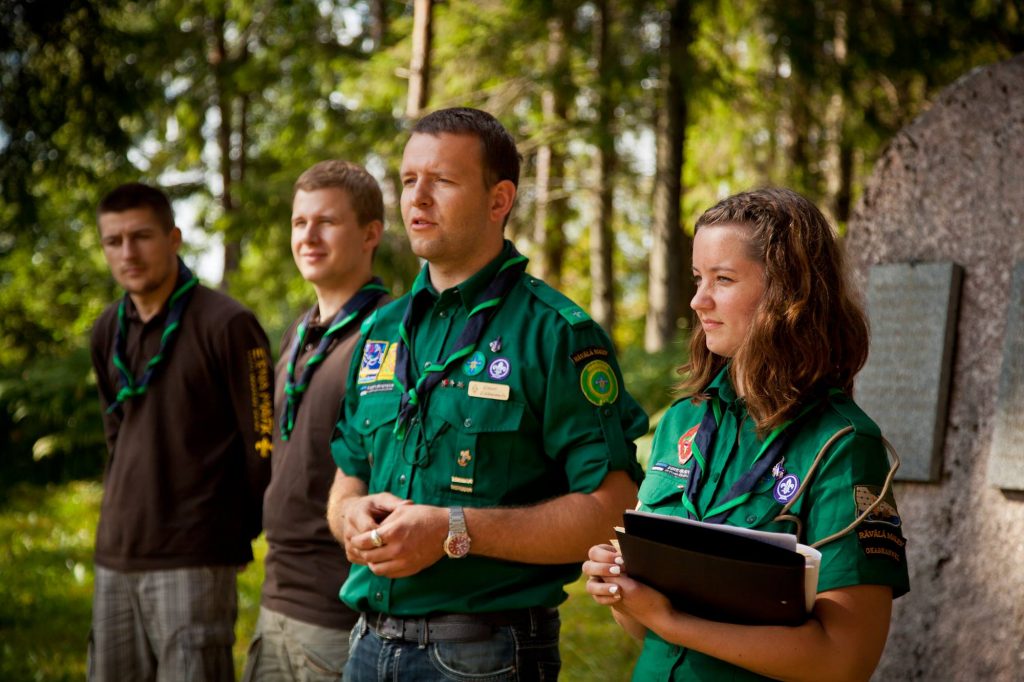
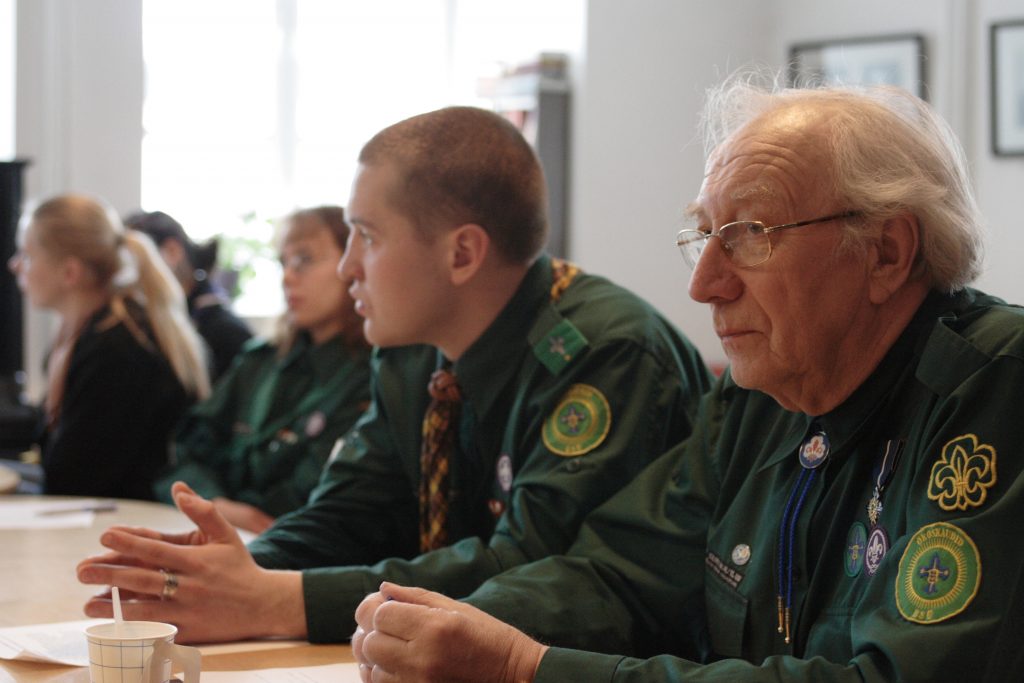
Overview of the Youth Program
The ESÜ youth program is based on the following core principles:
- Use of the Scouting method;
- Involvement in the planning process;
- Experience and personal development.
Creating the Program
The aim of Scouting is to raise young people as active and valuable members of society by helping them develop socially, physically, intellectually, emotionally, and morally. These five fields of development are crucial in the youth program, and every activity/adventure must be meaningful and connected to the goals set in each field of development.
The young are fully involved in shaping and implementing their Scouting experience. They devise, plan, and carry out Scout adventures, gain new experiences, skills, and personal development. Through this shared experience, we create a program for the group.
The role of the Scout leader is to provide support and guidance to the youth and keep them on the right path – to be a role model, not a boss. Younger age groups require more assistance and direction, however in older age groups, this becomes more of a mentor-coach type of communication. The Scout leader must be aware of the youth’s needs and understand “where they are” in their development as young people. Scout leaders assist young people in evaluating their activities and highlighting their experiences and development on the Scouting path.
Personal Journey
Each Scout is responsible for their own Scouting experience and participates in shaping and planning their journey. Young people are directed to explore the fields of development therefore allowing them to learn and develop through Scouting.
The program, which the young put together with the help of Scout leaders, proceeds in three specific steps: Assess – plan – carry out.
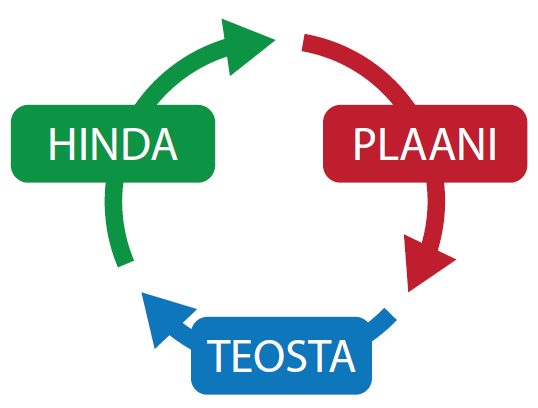
Activities are planned, carried out, and later analyzed. Post-activity analysis is crucial, helping young people learn through activities, bring out and consolidate new knowledge and skills, and take what they have learned to the next adventure. Drawing conclusions is an important part of the young person’s personal journey. It allows them to see their progress and move towards future discoveries and experiences.
Badges
During the program, it is possible to acquire three types of badges:
1. Promise/Oath Badge, which a young person receives upon giving the Cub promise or Scout oath along with the unit neckerchief
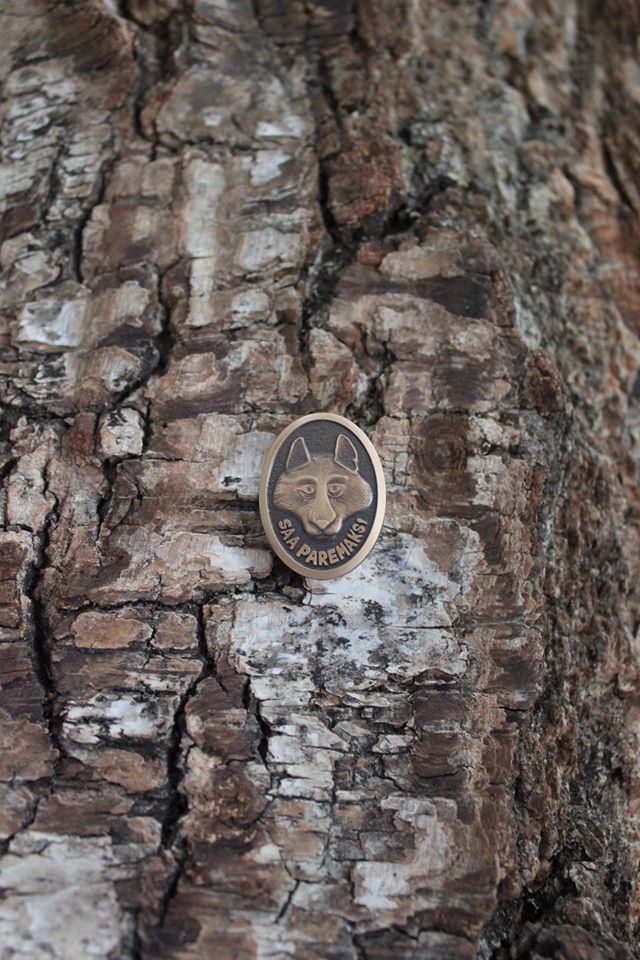
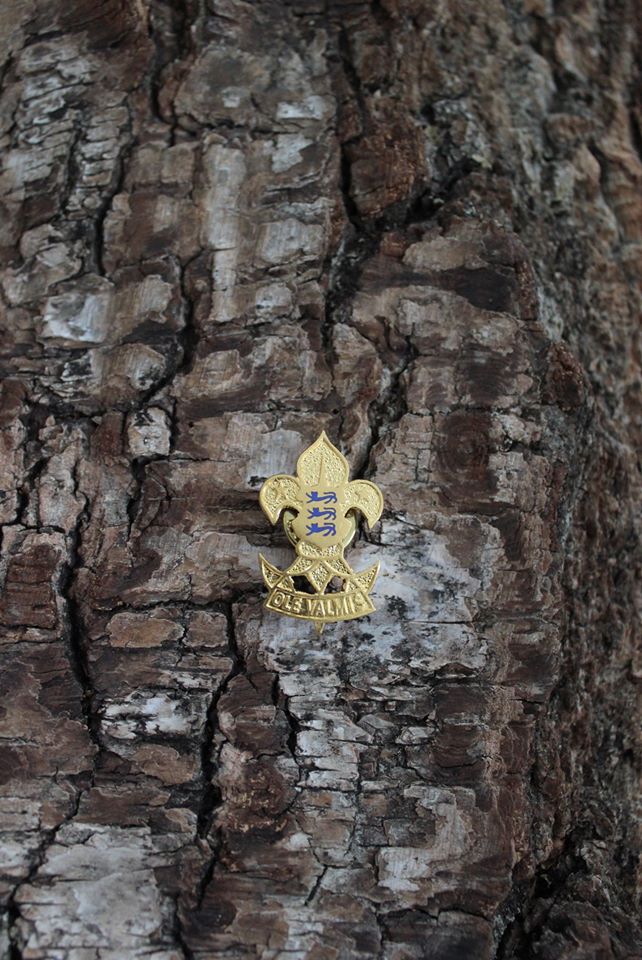
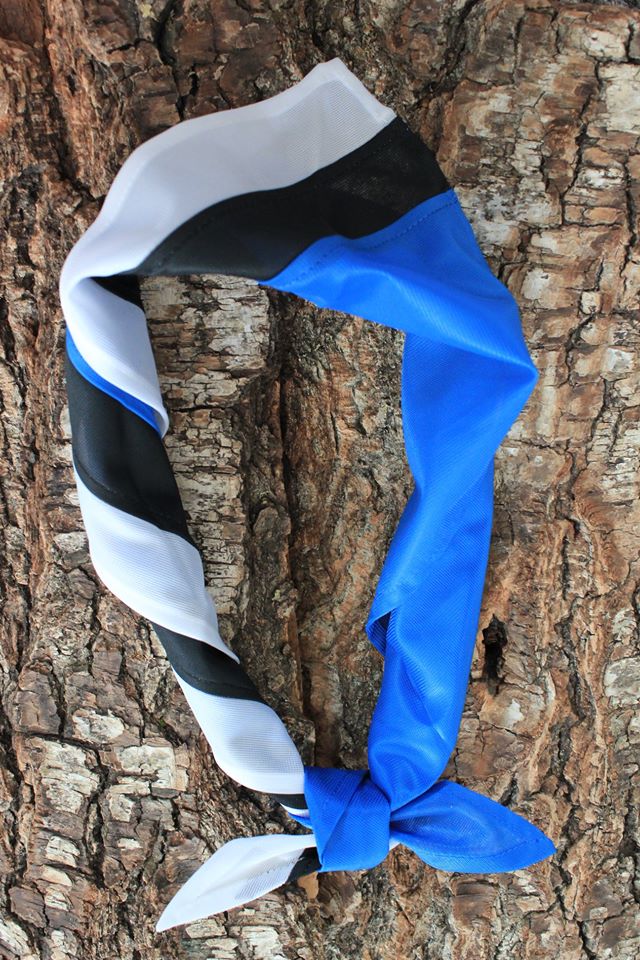
2. Personal Development Badges, which recognize the young person’s progress on their personal journey. These are not based on prescribed tests but rather on the principle of “moving one step forward.” For some, this may be easy, for others more challenging, depending on the young person’s maturity and learning ability.

Cub Level Badges

Scout Level Badges “Tree”
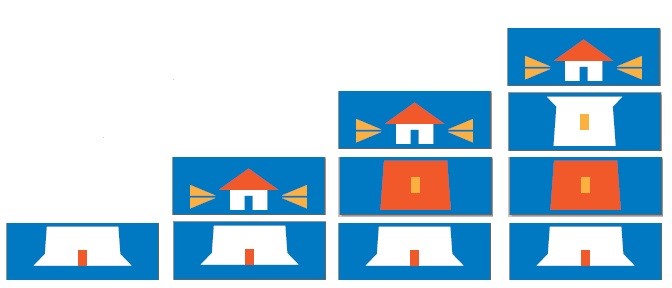
Senior Scout Level Badges “Lighthouse”

Rover Level Badges “Footprint”
3. Scout Skills Badges, which require the young person to acquire specific skills in the respective field. Scout skill requirements are divided into progressive levels (usually 4), ensuring complete mastery of the skill. When reaching the next level, the previous level badge is replaced. Scout skill areas include first aid, hiking, knot tying, etc.
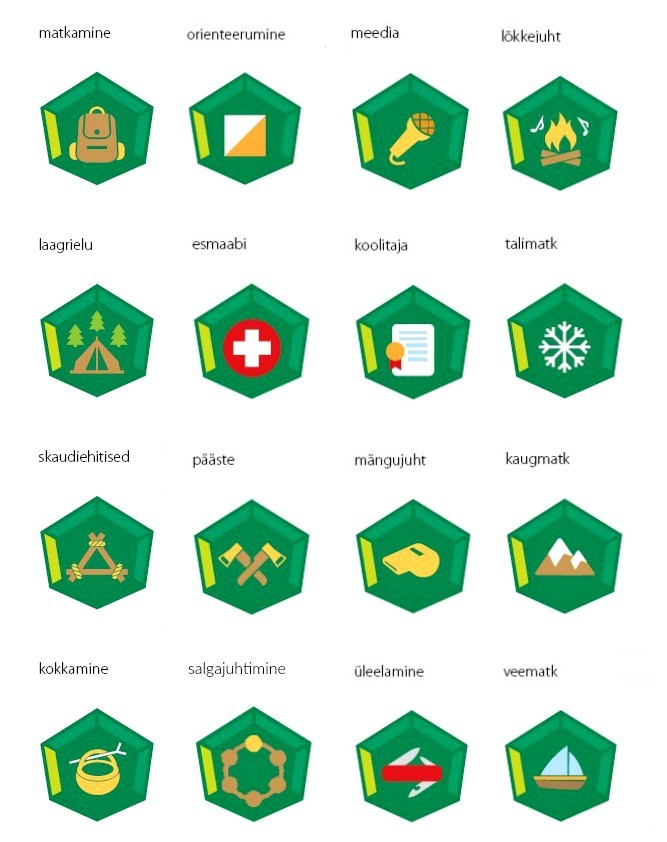
Skaudioskuste märgid
Scouting Method
Through the Scouting method, the program is brought to the youth. The developer of the Scouting method is the founder of Scouting, Robert Baden-Powell, and it serves as the foundation of all Scouting activities.
The Scouting method consists of eight components:
1. Cooperation of young people and adults – the trusted relationship between adults and young people and the growing responsibility of the young.
2. Promise and Scout Laws – commitment to values.
3. Activities in nature – a wide range of engaging, developmental, challenging, and enjoyable activities and adventures both indoors and outdoors, in the forest, and in the city.
4. Learning through action – by getting “hands-on,” learning sticks and the activity becomes “one’s own.”
5. Squad System – in a small group supporting each other, one is braver and more comfortable.
6. Personal development – a recognition system that encourages development and participation.
7. Symbolic framework – names, stories, words, badges that bind and create a sense of belonging.
8. Leadership experience and responsibility – opportunities to lead and take responsibility.
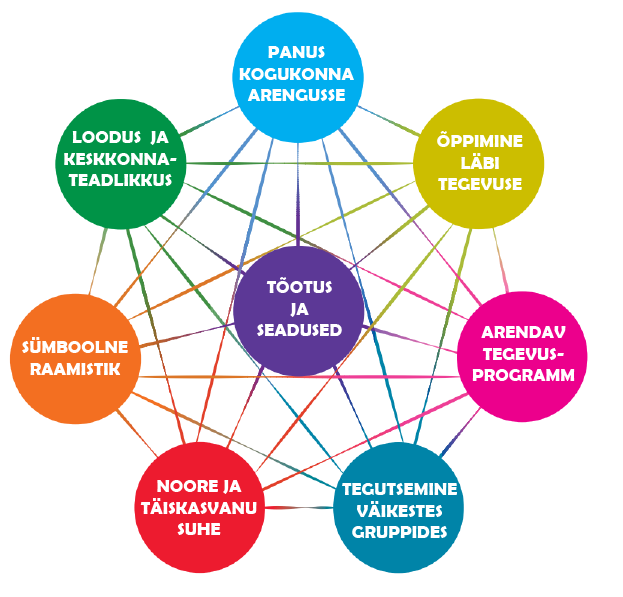
Cooperation of the Young and Adults
The role of adults is to guide and support the young person’s development and provide a safe environment for the young people to act. Adults and youth in Scouting act together on equal terms, sharing the same ideals and commitment, following the Scout promise and laws. They are partners working towards a common goal: the full development of each young person.
For this partnership to work, mutual listening and respect are necessary. Adults help young people learn by listening to them, being ready to talk to them, valuing their participation, instilling confidence, encouraging, and creating a safe environment for them to experiment and explore. Adults help young people achieve what they have undertaken, develop self-confidence, find their limits, and move forward in life.
Young people need support points in their lives, including adults with whom they can talk freely. Adults should ensure that all activities and events are evaluated, and new knowledge, skills, and qualities are clearly defined.
The role of the Scout leader through the various age groups of the youth program diminishes gradually. While in the Cub age group, the leader needs to do preparatory work, organizing, and taking responsibility, as the age group advances, the role of the adult is more to be an example and mentor rather than a leader.
At the same time, it is always the Scout leader’s task to ensure that the activities of young people are safe and connected to the goals of the youth program.
“The success in training the boy depends largely on the Scoutmaster’s personal example.” /B-P/
Oath and Scout Laws
Scouting is a way of life based on the Scout promise and Scout laws (Cub laws) creating a framework of values. Implementing the Scout laws in everyday life gives the Scout a practical opportunity to understand Scouting values. The Scout promise is each individual’s personal commitment to uphold these values. The promise is made in front of fellow members in the first few months after joining Scouting.
By making the Scout promise, the young person makes a conscious and voluntary decision to strive to fulfill the Scout laws. The fact that the promise is made in the presence of peers not only makes the promise public but also symbolizes a certain social obligation to peers.
“The Scout Law is the foundation on which the whole of scout training rests.” “It invites the young person to make commitment concerning his/her own personal development.” /B-P/
Activities in Nature
If possible, Scouting activities take place in nature. Through this, we teach young people to get to know and respect nature and live in an environmentally friendly way. Nature offers us an endless number of activity places, activities, and resources. Hiking and camping are among the most characteristic activities of Scouting.
Being in the wilderness with the troop is a team experience. Managing everyday life together (choosing the route, cooking, choosing the campsite) away from modern comforts creates a mini-community within the troop, where working provides invaluable experiences for life in the “real” society. In a deeper sense, the powerful nature with all its wonders is the best place to contemplate oneself, the world, and one’s place in that world.
“God has given us a world to live in that is full of beauties and wonders and He has given us not only eyes to see them, but mind to understand them, if we only have the sense to look at them in that light.” /B-P/
Learning through Action
Scouting is not about lectures or exams. To learn something new, an activity related to that topic is undertaken and started from scratch (except for topics requiring mastery of safety techniques). Young people learn from each other and with others. The knowledge, attitudes, skills, and attributes learned during the activity are discussed in the summary phase. It is much easier for the young person to understand what is being told to them if they can relate it to their previous experience.
In this context, “activity” is not limited to manual skills or factual knowledge. It also includes responsibility, leadership skills, interpersonal relationships, planning skills, etc. Games also play a significant role in Scouting because every game we play has its own purpose, and games help us learn.
Squad system
Actions are taken in small groups under the guidance of an adult. In small squads (5-9 young people) teamwork, leadership skills, and responsibility are developed, which is the basis for the development of citizen courage. At the same time, a sense of belonging, willingness to cooperate, the ability to plan one’s own activities, and consider others’ interests are deepened.
Personal Development
The Scouting youth program is progressive – different by age group and depending on age and level of development, it supports and guides the young person’s development. Significant attention is paid to each individual’s development. By acting with others, not only a sense of belonging is deepened, but also self-control, self-confidence, and self-respect. Young people also learn to serve others and society and notice their fellow human beings. With individuality in mind, young people’s initiatives are applied as much as possible.
Symbolic Framework
In Scouting’s symbolic framework, at its inception, nature was the basis of Scouting, and the aim was to learn how to manage in the forest. Today, the boundaries of action have expanded considerably, and being a Scout means both coping with nature and creative thinking, enthusiasm, challenge to oneself, and the ability to play an active role in society. Symbolism also plays an important role in Scouting – Scout badges and uniform, which help motivate young people to develop themselves and ensure equality among young people.
Leadership Experience and Responsibility
Scouting offers young people ideal opportunities to take responsibility. Whether through designated positions (patrol leader) or responsibility for cooking dinner on a hike or leading a game, as the program progresses and between age groups, the level of responsibility and leadership tasks should increase. With the correct implementation of the Scouting method, each patrol member always has something during each activity that is their responsibility.
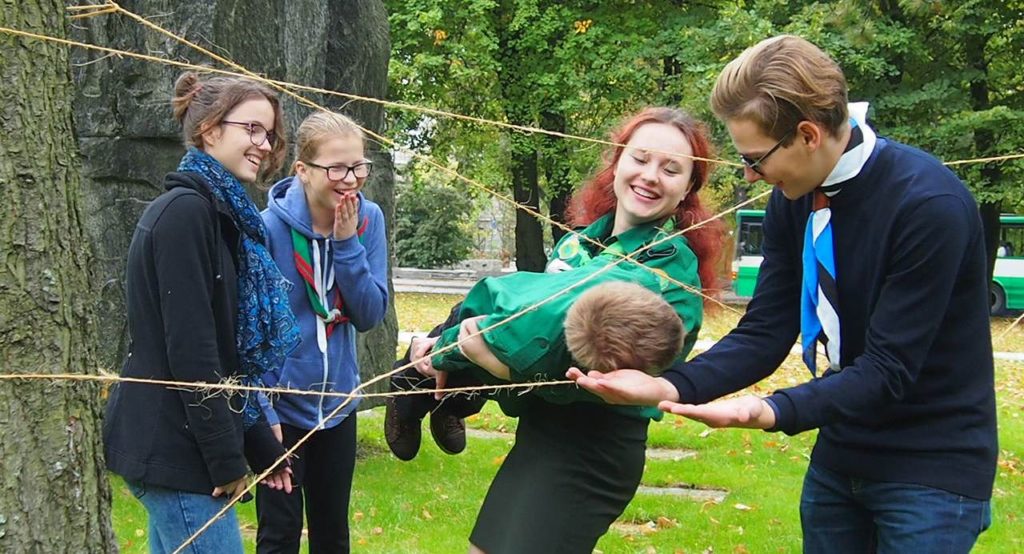
Age Groups
Cubs (6-10 years old)
Cubs are young scouts just starting their scouting journey, aged 6-10, who operate under the guidance of their Cub Scout leader in groups of 5-9, known as a “Cub’s Den.” Their regular meetings are called “Cub Gatherings”. The Cub Scout program was updated in 2020. Cubs have the opportunity to complete 4 challenges – the Bright Paw Challenge, the One Ear Challenge, the Two Ear Challenge, and the Glen Paw Challenge (4 ranks of Cubs). To complete these challenges, cubs undertake various tasks and acquire knowledge about nature, scouting, and interpersonal relationships under the guidance of their Cub Scout leader.
Millised üritused on mõeldud HUNDUdele?
- Kriimsilm Camp – an indoor camp that takes place at the beginning of the autumn season, designed exclusively for the Cub Scout age group and often serves as their first camp experience;
- St. George’s Day Camp – a city camp for all age groups;
- Jamboree – taking place every four years in Tagametsa, it is meant for all age groups, including foreign scouts;
- ESÜ/regional/unit (summer) camps and hikes.
Scouts (11-14 years old)
The Scout age group includes 11-14-year-olds who have transitioned from Cubs to Scouts or joined during that age. The Scout program is designed to develop young individuals in five different areas, helping them become valuable members of society. Activities take place in regular meetings called Scout troops. A troop consists of 5-9 young people, and regular meetings are referred to as “Scout Gatherings” during which various scouting adventures are undertaken.

Scouts level badges TREE
What events and training are intended for SCOUTS?
- ÕKV (Õunapuu Cup) – a hike specifically aimed at Scout-age participants, organized by the winners of the previous year’s hike;
- Young Achievers’ Club – a training on how to organize one’s dream event, which the young person can implement in reality after successfully defending their project;
- Scouting Masterclass – training that can be attended starting at the age of 12;
- Winter Games – a winter camp aimed at Scouts and Senior Scouts;
- St. George’s Day Camp – a city camp for all age groups;
- Jamboree – taking place every four years in Tagametsa, meant for all age groups, including foreign scouts;
- ESÜ/regional/unit (summer) camps and hikes;
- International camps in foreign countries.
Senior Scouts (15-17 years old)
Senior Scouts are 15-17-year-old ESÜ members. The Senior Scout program also develops young individuals in five different areas to help them become valuable members of society. Completion of the program takes place in Senior Scout teams. As a Senior Scout, one can take on the role of leading their troop after completing the Scouting Masterclass training. Voluntary work, in turn, earns extra credit, for example, when applying to universities! More specific information can be obtained directly from the university – sometimes specific credit can be earned simply by submitting documents, other times it is important to mention it during the interview.

Senior scouts level badges LIGHTHOUSE
What events and training are meant for SENIOR SCOUTS?
- Winter Games – a winter camp aimed at Scouts and Senior Scouts;
- Youth Council – a place for young people to spend time together, with the aim of providing input for the development of ESÜ;
- Scouting Masterclass – training for scout leaders;
- Consultation Days – an event where ESÜ members can provide input to the board on various topics, discuss possible significant changes, and get to know other unit members/leaders;
- ERNA Hike – Estonia’s toughest hiking game, with a scouting trail that is certainly passable for Senior Scouts;
- St. George’s Day Camp – a city camp for all age groups;
- Jamboree – taking place every four years in Tagametsa, intended for all age groups, including foreign scouts;
- ESÜ/regional/unit (summer) camps and hikes;
- World Jamboree and other international events in foreign countries.
Rovers (18-26 years old)
Rovers are 18-26-year-old ESÜ members for whom a Rover program has been created, based on the same principles as the Scout and Senior Scout programs. The Rover program is no longer unit-based but takes place in Rover clubs, to which ESÜ Rovers from various units across Estonia belong. Currently, there are Rover clubs in Tallinn and Tartu, but if there is interest, it is possible to create a Rover club in any part of Estonia.

Rovers level badges FOOTPRINT
What events and training are meant for ROVERS?
- Youth Council – a place for young people to spend time together, with the aim of providing input for the development of ESÜ;
- Scouting Masterclass – scout leader training;
- Consultation Days – an event where ESÜ members can provide input to the board on various topics, discuss possible significant changes, and get to know other unit members/leaders;
- ERNA Hike – Estonia’s toughest hiking game, where you can choose between three difficulty levels;
- St. George’s Day Camp – a city camp for all age groups;
- Jamboree – taking place every four years in Tagametsa, meant for all age groups, including foreign scouts;
- ESÜ/regional/unit (summer) camps and hikes;
- World Jamboree and other international events in foreign countries*,
**All adults (18+) can participate in international camps as IST (International Service Team), whose task is to keep the camp running smoothly, i.e., to be a helping hand in the camp. However, being an IST does not mean that you have to work all the time during the camp. ISTs also have their own program and free time activities, in addition to being a great opportunity to meet scouts from all over the world.
Adult Volunteers (Aged 27+)
In Scouting, volunteers are considered to be those of Rover age who are in a voluntary position and all adults aged 27+ who are already or wish to join Scouting. Scouting offers volunteers an opportunity to develop and test themselves in areas that everyday life does not provide or, conversely, an opportunity to introduce Scouts to their everyday work or hobby field and thereby apply their knowledge and skills to improve the organization of an event or in other ways. Volunteers have various resources to give to Scouting: their time, knowledge, or money. Scouting offers in return the joy of working together with children, making new friends, and exciting adventures. In addition, the advantage of volunteering is that you can determine how much time you have to devote to it.
To become familiar with Scouting, New Volunteer Forest Camps are held every spring and autumn, which do not oblige the adults volunteers to anything but offer a great experience to spend a weekend in our Tagametsa camp center in the middle of the primeval forest and gain new knowledge and meet new people. At the end of the Forest Camp, everyone can decide if they want to participate in Scouting at all and, if so, in what role.
See the Volunteer page, where you can get more specific information about the various roles and opportunities in Scouting.
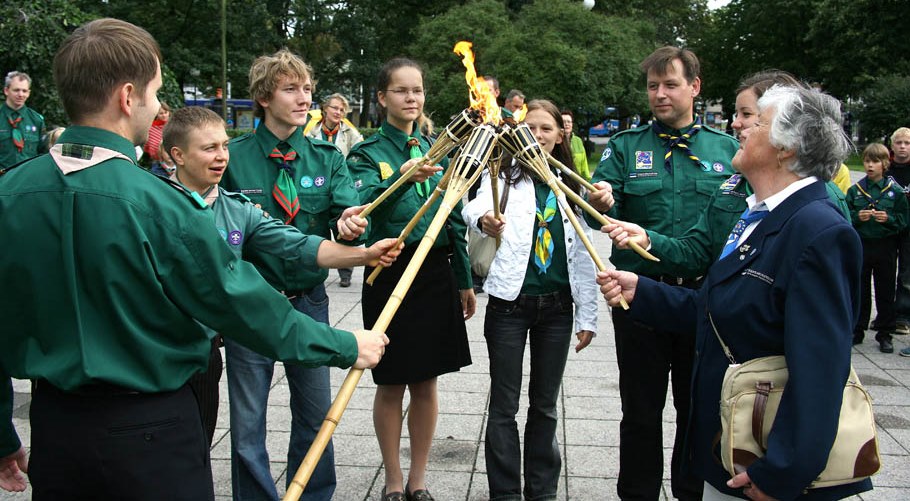
You can join and participate in Scouting at any age.
Youth Safety
In Estonian Scout Association (ESÜ), the safety of children and young people is ensured by appropriate training, adult instruction, and the ESÜ Child Protection Guide, which sets out the principles of the association’s behavior. ESÜ’s task is to ensure the well-being of all its members and non-members in ESÜ activities, protecting them from potential physical and emotional harm.
At ESÜ events, there is always a security team and a person responsible for first aid. Prior to becoming a scout leader, there is training and ongoing communication, which reveals the leader’s competence. We also conduct an annual criminal record background check for all adult members and all new adult members upon joining. It is recommended that at least two adults be present when conducting gatherings and outings.
In addition, two trust and support persons have been elected in ESÜ, to whom both young people and leaders can turn to with their concerns if necessary.
DON’T BE ALONE WITH YOUR PROBLEMS!
If you have a problem, need help, or feel like you need to talk, don’t be alone with your problems. It is definitely worth talking to your parents, teachers, school psychologist, or someone else you trust. You can always feel free to turn to your troop or unit leader. But if you feel like there is no one around you right now who you want to turn to, here are some contacts where you can get help.
- Child Helpline 116111 – Callers can be children themselves or adults – parents, relatives, specialists, neighbors, friends, acquaintances, but also anyone else who needs advice on children’s issues. The purpose of the short number 116111 is to allow all persons to report a child in need in a timely manner, to ensure that the information received is passed on to the relevant specialists, and to provide children and persons related to children with initial social counseling and, if necessary, crisis counseling.
According to Section 27 of the Child Protection Act, all persons who have information about a child in need are obliged to immediately report it to the local government unit or to the child protection hotline 116 111. If the child’s place of residence registered in the population register is not known or cannot be determined, the report of a child in need must be immediately forwarded to the local government unit where the child is staying.
According to the Child Protection and Social Welfare Act, the local government has a key role in organizing child protection and welfare. This includes the work of child protection workers and social workers who perform child protection tasks. Contact information can be found on the website of the local government. You should first contact them. Occasionally, people are dissatisfied or critical of the assistance (service) provided by the local government, or the response and information received is not satisfactory. In this case, we recommend contacting the Social Insurance Board’s child protection unit.
- Lifeline, Emotional Support Hotline 6558088 – The Emotional Support Hotline is for people who are in an emotional crisis, depressed, deeply worried about loss and grief, feel lonely, suffer from violence, experience various relationship and family problems, social difficulties, or want to leave life.
- Youth Helpline 646 6666 (Thursday to Saturday, 7PM to 10PM).
- Helpline (psychological help) – 126 (in Estonian) ja 127 (in Russian).
- Youth counseling cabinets (sexual health) – https://www.amor.ee/Noorte_noustamiskeskused.
- Internet counseling on sexual health – http://www.amor.ee/kysi_nou1.
- Questions about mental health – http://peaasi.ee/kysi-noustajalt/?fbclid=IwAR2odSv_wzg3bwK4IoiABLQODj7dYjbmh3c4ZmreKaMo2_k_gCwBEOHGWxQ.
- Internet counseling– https://www.lahendus.net/?fbclid=IwAR1eTuaFJQlle8UknL88puF_jhRb4h3SFEdANSMrCab2HtaOOtEMrfiEtl8.
- Emergency 112 – Call there if you need emergency assistance, if an accident has happened, or if you are in danger.
- Poison Control Centre 16662 – You can get help and instructions from this number if you have taken something (or suspect that you have taken something) that you should not take or if you have taken something too much.
- Primary Care Advice Line 1220.
More like this:
• www.enesetunne.ee
• www.amor.ee
• www.peaasi.ee
Connected videos:
• https://youtu.be/gTAVzX8cLv8
• https://www.facebook.com/WOSM.OMMS/videos/1822976104464305/
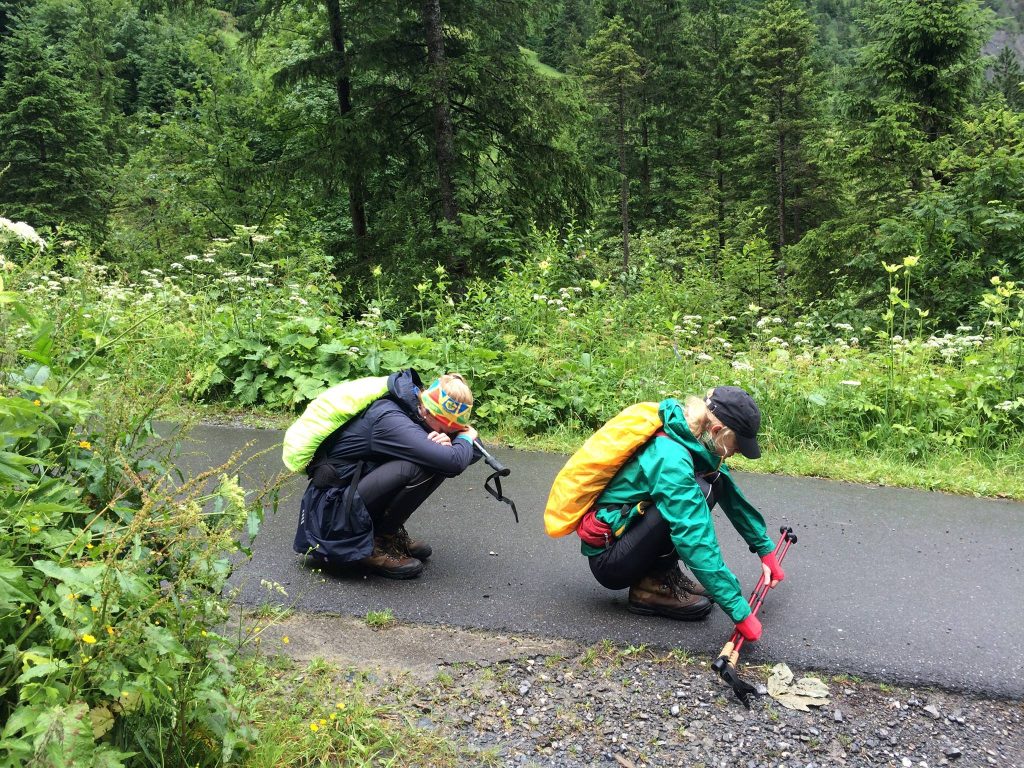
Estonian jamboree Silmapiir 21. – 27.07.2024
Estonian Scouts Associations jamboree is coming again! This time the camp name and theme is Silmapiir (Horizon, translation word for word eye-limit). Camp newsletter can be found here.
Equipment list can be found here.
Camp programme can be found here.
You are sitting on the edge of an endless meadow among the grass whispering in the wind. You can hear the birds singing and the rustling of the trees. Looking into the distance, your gaze stays on the horizon. “What’s waiting for me behind this?” you wonder, as the wind gently caresses your back, whispering, “Go and find out.”
You timidly set out on the road. Having traveled countless roads, the journey seems familiar, yet at the same time there is much new to explore and discover. You wander to new places, discovering new roads and trails. You get to know yourself and your friends. You meet old friends along your journey, though there are also many strangers, who will be your companions on this journey and thereby become your friends.
Is it necessary to reach the distant horizon, or is it a dream of self-development, discovery, learning and adventure?
The camp will take place 21.07.2024 – 27.07.2024 in Paunküla Leisure Center.
All ESA members, representative units of friendship organizations and foreign scouts are welcome.
Registration on the ESA website has been closed. All registrants are asked to fill in participant/ IST form after registration and send to monika[at]skaut.ee .
Contact camps interational commisioner for help with transportation (and if necessary, tents).
Equipment list
☐ Tent + tarp
☐ Backpack
☐ Sleeping bag + roll mat
☐ Neckerchief + uniform (including long and/or short trousers/skirt)
☐ Hat or other headgear
☐ Warm jacket + sweater
☐ Tracksuits or comfortable clothes
☐ T-shirts + shorts/skirt
☐ Underwear
☐ Warm wool socks
☐ Rain clothes + wellies
☐ Hiking boots
☐ Light shoes + flip-flops
☐ Utensils (bowl, cup, spoon, knife, fork) + drinking bottle
☐ Swimwear and towel
☐ Toiletries (soap, toothbrush, toothpaste) and small towel
☐ Tissues
☐ Pen/Pencil
☐ Songs books + musical instruments
☐ A small set of sewing supplies
☐ Flashlight + extra batteries/charged batteries
☐ Pocket knife (you will use it at “Fire” activity field – take it with you)
☐ Spending money (ice-cream €1, Scout shop)
☐ Wristwatch
☐ Compass
☐ Sun cream
☐ Mosquito repellent
☐ Small first aid kit (inc. Personal medication + plasters)
*NB! In the camp, phone coverage can be poor and there are no charging facilities, so take a power bank and use the phone seldomly (for example, only to call family). Parents can definitely connect with their children through their leader. We also ask you not to bring expensive jewelry and other items that you could lose.
In addition, a request from the program director: Dear camper! We know your backpack is already heavy enough, but please also bring:
- one old shirt that you are not sad to lose (you will use on the Fire field – take it with when its your day)
- 1-2 small glass jars (to fit tea light) to make a candle holder. All kinds of jars and colors are suitable. e.g. smaller jam jars
FAIR DAY. Come up with a cool activity, product or service that you want to teach, sell or provide to other campers on the day.
ADDITIONAL INFORMATION: Jamboree international commissioner Sofija Fisher sofija.fisher@gmail.com.
SPONSORS AND SUPPORTERS: Ministry of Education and Science, Paunküla Heaolukeskus
Paunküla heaolukeskus – Paunküla Leisure center
Estonian national jamboree SILMAPIIR will be held in Paunküla.
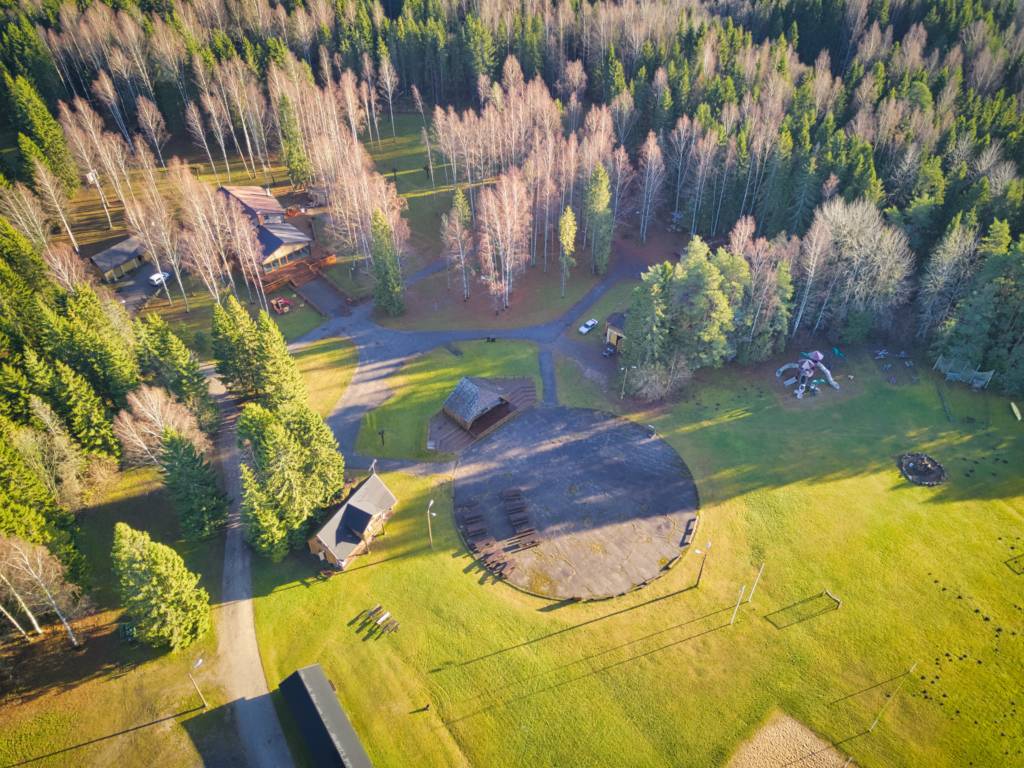 | 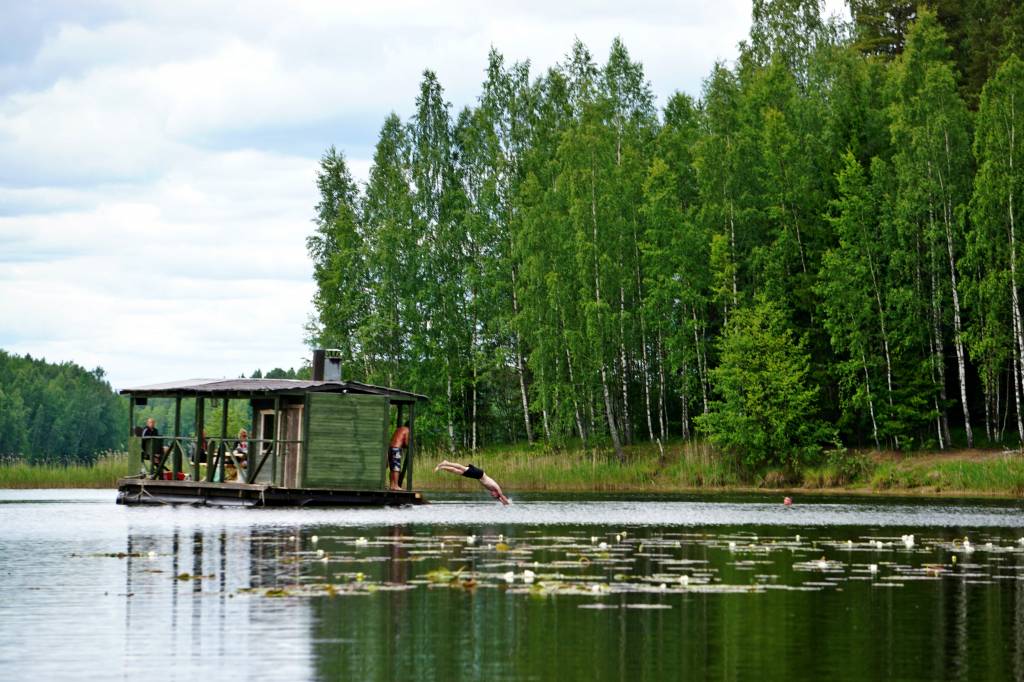 | 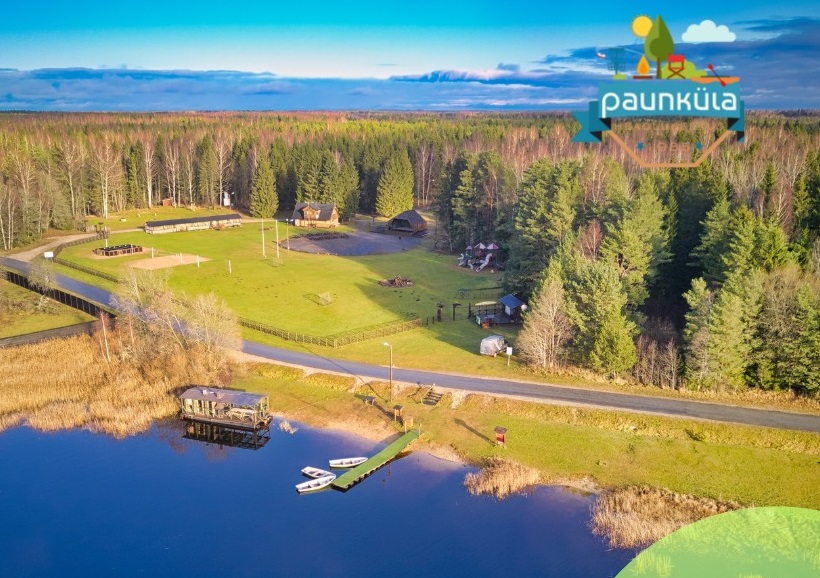 |
In Paunküla, there is comfortably enough space for our planned 4 sub-camps, activity areas, and there is a large main square.
Catering is provided by the excellent chefs of Paunküla Leisure Center. Additionally besides our own awesome climbing equipment and canoes, there are exciting extra activities available that enrich our program – sup paddleboarding, a raft sauna, disc golf, and more.
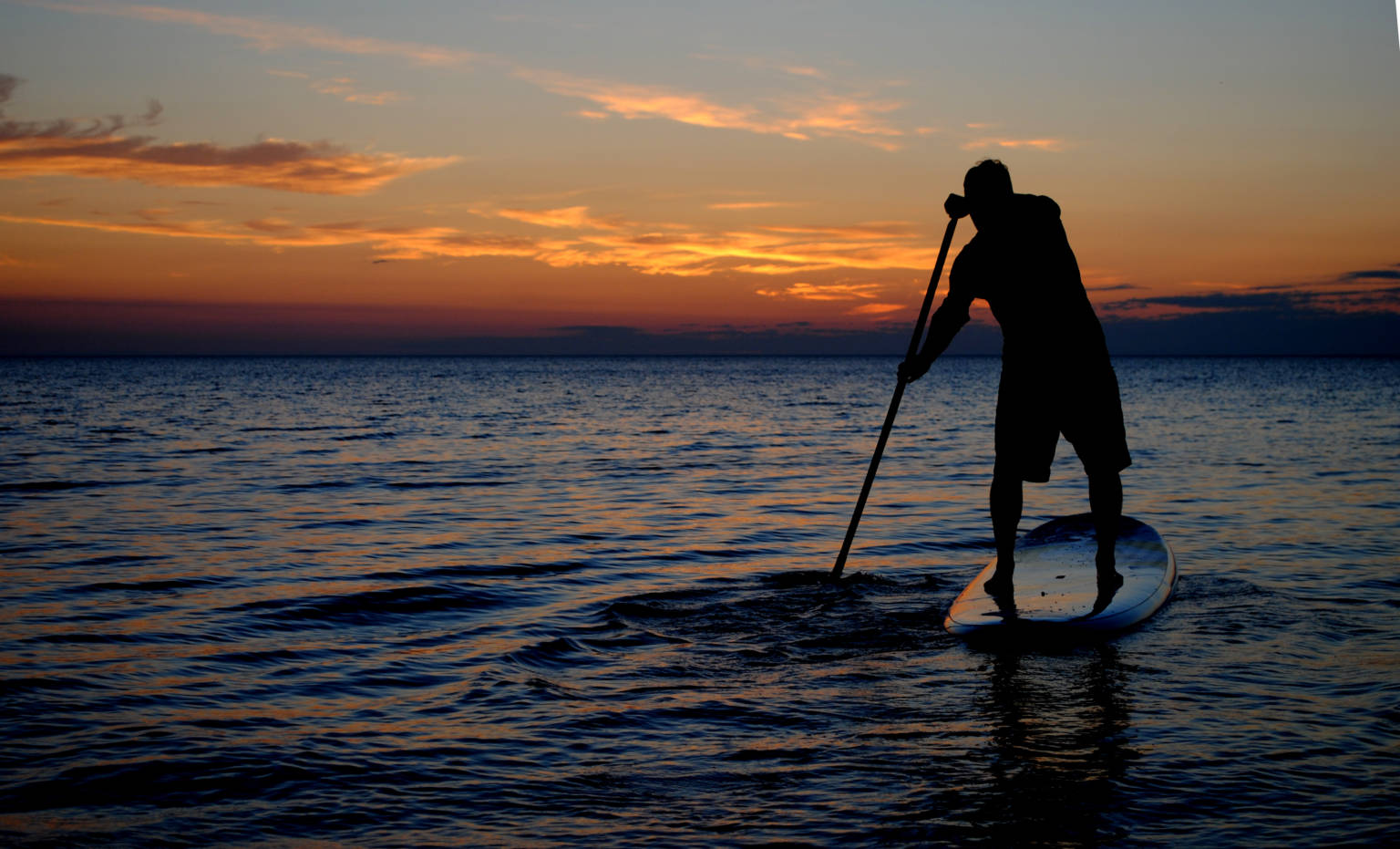
Location: Kiruvere, Paunküla, Kose vald, 75006 (59.114902442507045, 25.38063645892484)
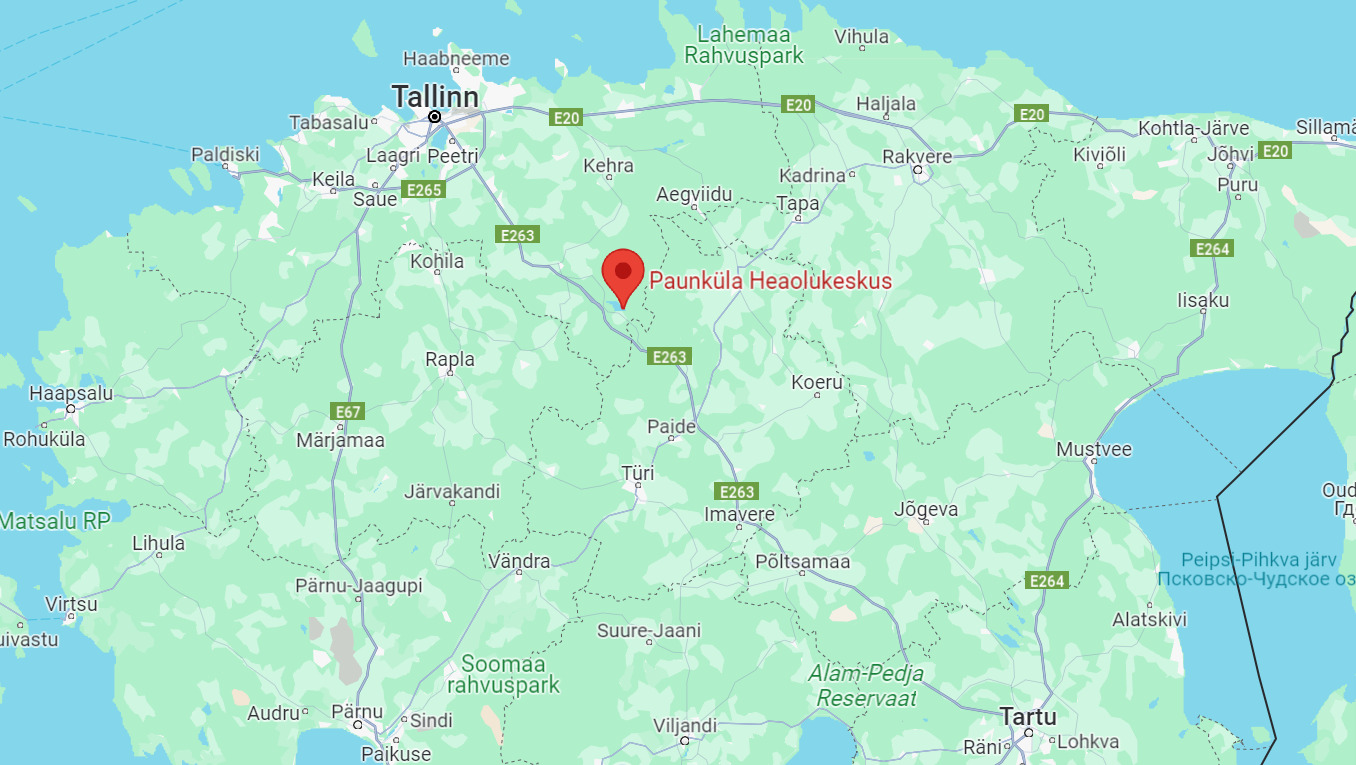 | 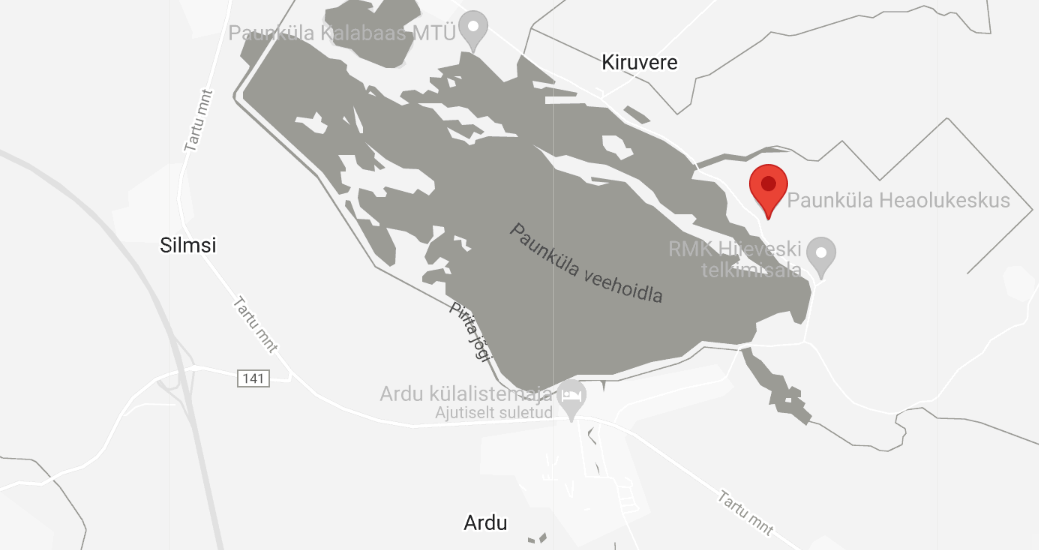 |
Using public transportation: Buses can be taken to Ardu, and from there onwards (coming along the lakeside road), it’s about a 30-minute walk (2.7 km).
| From Tallinn (stop Estonia 3 or Bussijaam) | From Tartu to Paide and then from Paide to Ardu |
| Bus nr 139 or 140 | Bus nr 104 or 153 and from Paide nr 4B |
We will also organize charter buses in cooperation with local units (from Tallinn, Tartu, Narva). More specific information regarding this will be available in spring 2024.
Members fee
Our membership fee in 2024 is 15 euros.
New members who join the Estonian Scouts Association after October 1st of the current fiscal year are eligible for a membership fee discount. The membership fee for new members in the current fiscal year is 5 euros.
Family discounts apply for multiple members from the same family:
- 1st member of the family – 15 euros,
- 2nd member of the family – 12 euros,
- 3rd member of the family – 9 euros,
- 4th (and more) member of the family – 6 euros.
In addition to the family discounts described above, it is possible to pay a family membership fee of 40 euros for the entire family (up to two adults and their children) when registering as a member of the Estonian Scouts Association.
The membership fee is non-refundable.
Supportter membership fee
If you want to support the activities of the Estonian Scouts Association, you can pay a supporter membership fee, which starts at 30 euros. Please indicate “supporter membership fee” in the payment details. To receive a tax deduction for the supported amount, please also include your personal identification code in the payment details.
P.S. If you do not want your name to be published in the list of supporters of the Estonian Scouts Association, please also indicate this in the payment details (for example, “anonymous donation”).
It is also possible to designate the income received from the tax return as a donation directly to the ESÜ account when filling out the tax return.
Payment
The Estonian Scouts Association collects membership fees separately for each member. There are two ways to pay membership fees:
1. Make a transfer to LHV bank: account number EE687700771000674448, reciever Eesti Skautide Ühing and add description „MEMBERSHIP FEE/ NAME OF THE UNIT / Name Lastname 15EUR, Name Lastname 12EUR“. If you are paying for a group of people you can add the description “MEMBERSHIP FEE / NAME OF THE UNIT / 21×15EUR, 5×12EUR, 2×9EUR“ + send an email to our members coordinator at aneth.kond@skaut.ee, to the email you should add the names and amounts for whom did you pay for.
2. Visit our Scout Shop and choose “ESÜ liikmemaks 2023“. Choose the appropriate membership fee amount and complete the purchase. If paying for multiple members, add the names of all members in the notes field.
Membership fee exemption
If there are members in your unit who cannot pay the annual membership fee, you can ask for the membership fee exemption. For that you should write an email to finants@skaut.ee.
You can use the example:
Please exempt the following members from Estonian Scouts Association’s annual membership fee for the year 2023: John Miller, Jane Miller.
Anne Adams
Männimetsa unit leader
The board of Estonian Scouts Association will look into the application and confirm the request. You do not need to write a new application for a new year. It is enough to send an email to finants@skaut.ee saying “John and Jane are also active member this year and will continue to use the exemption of the membership fee.”.
It is also possible to apply for a membership fee exemption for adult members (including yourself). However, adult members must submit a new application each year.
Welcome to Scouting
“Welcome to Scouting” is an Estonian Scouts Association’s (ESÜ) forest camp training, where the participant will learn about scouting and about the possibilities for a volunteer in ESÜ.
We look for both adults who have had experiences in scouting and those who haven’t. A parent, scout or just someone who’s interested – everyone is welcome!
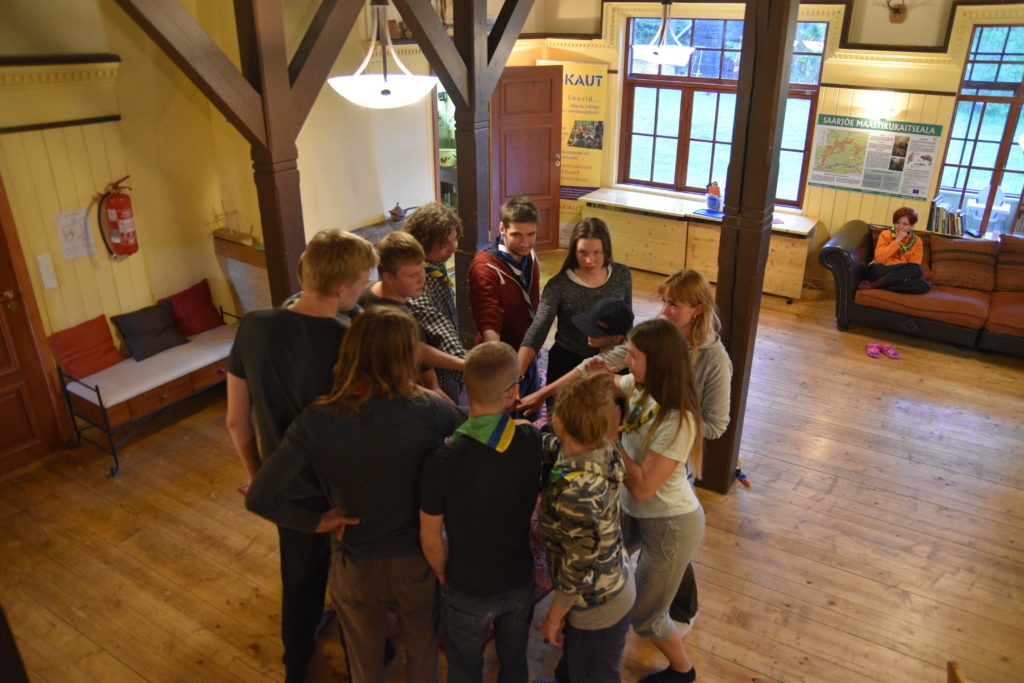
The training will teach how to make a bonfire, the main truths about camping, how to make food on a bonfire, how to tie different knots, traditions connected to flag hoisting and many other things a scout does in an average forest camp. It will broaden your point of view, give new challenges and bring a smile to your face!
After the training you will have a chance to volunteer and become a leader of a scout group, be in an events production crew or help in your child’s scout group.
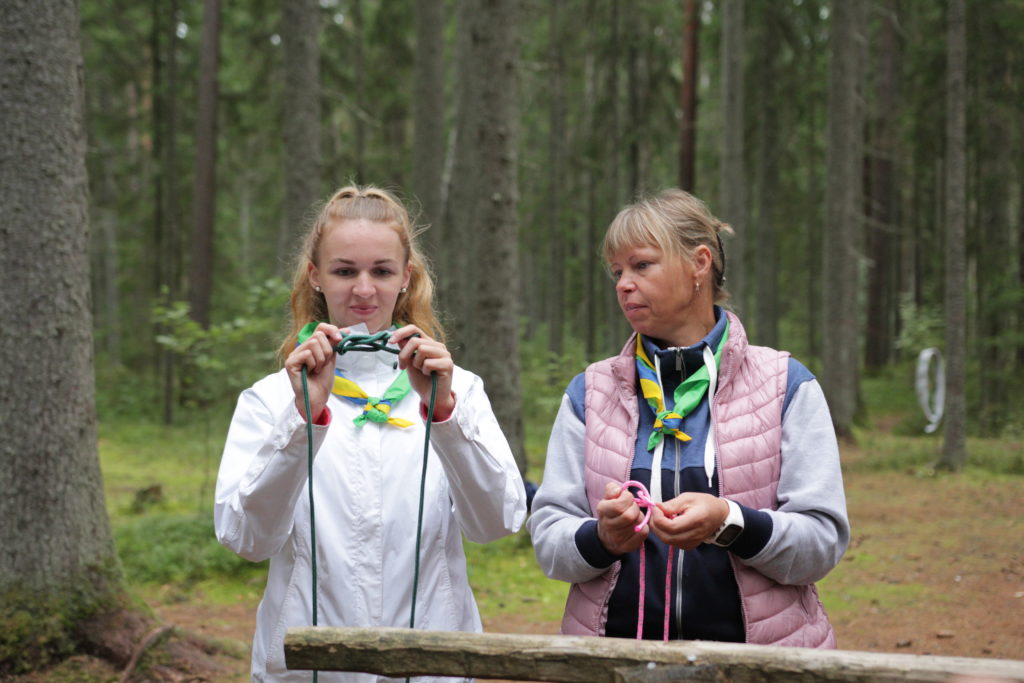
Experiences of people who have been to the forest camp “Welcome to Scouting”:
“I was pleased with everything. From how it was organized and the program of the lecture days, to the food and weather. Thank you very much! PS: The fact that there was no internet was actually very good.”
“Very well organized. Filled program, useful, positive and seemed that every participant liked it a lot. Big thanks!”
“A very good and intense lecture. I came here with very little knowledge about scouting and left motivated to become a scout leader. I liked that the lecture included many practical and playful activities as well as the theoretical part. The lecture took place outside in the fresh air and it was wonderful. Keep continuing.”
“I got the courage to be more open and the confirmation that values of a scouting program are the same as our family’s values.”
“Everything I learned and experienced was very cool. The only thing I would’ve wanted was more time to experience it.”
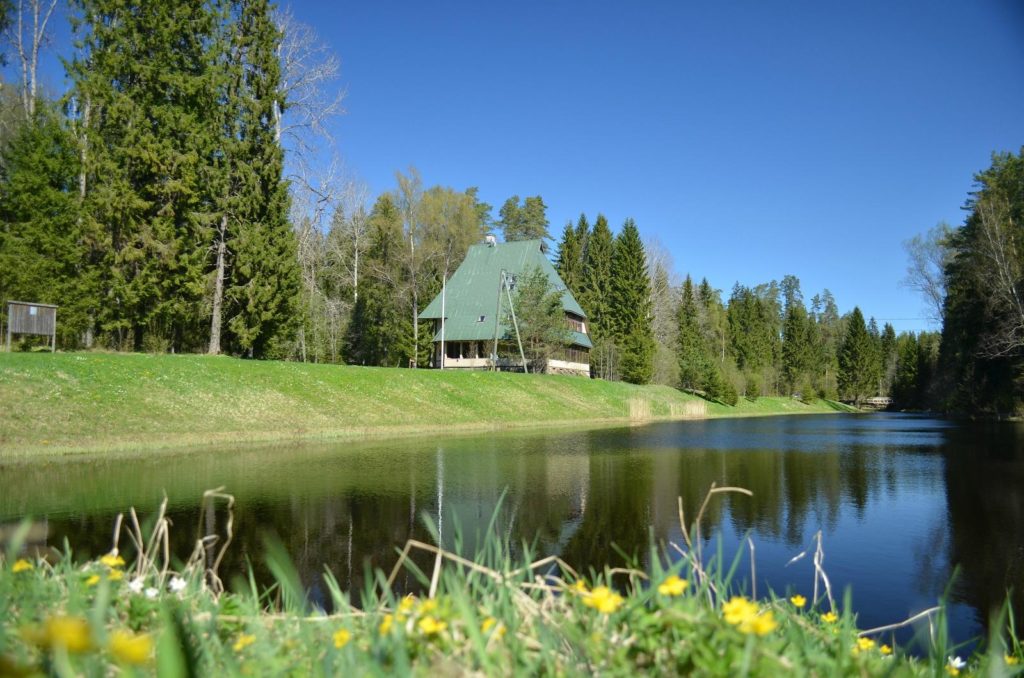
You can look at the gallery of the lectures HERE.
It’s also possible to listen (in Estonian) to their experiences:
Kriimsilma laager 2022
Kriimsilma laager 2022 toimus sel aastal Karksi-Nuias, ürituse peakorraldajaks Metsavahe skautide juht Artur Viks. Meepealinna seiklused on kirja pannud Ökoskautide hundusalga juht Tuuli ning tema brasiillannast abijuht Bruna.
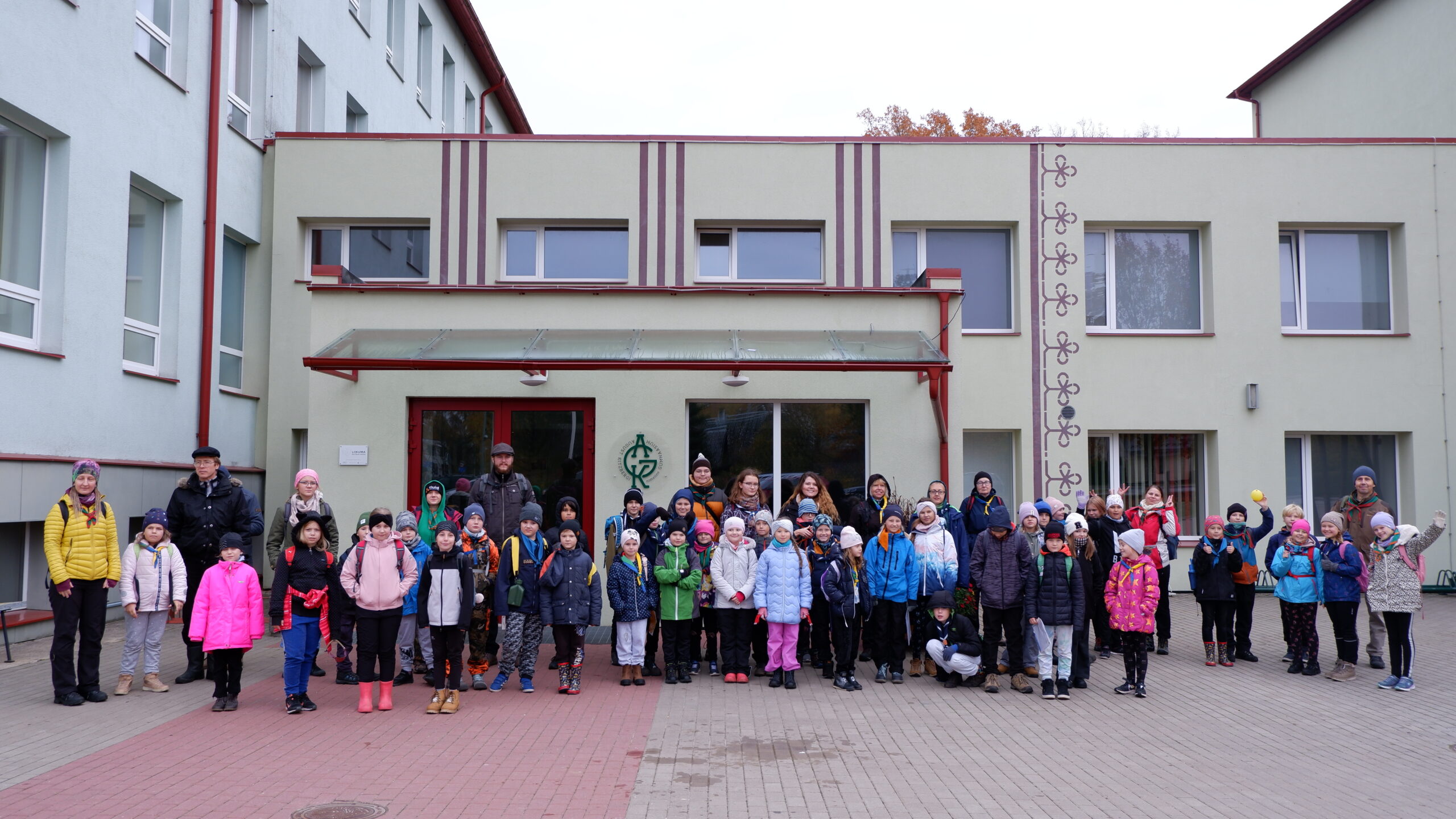
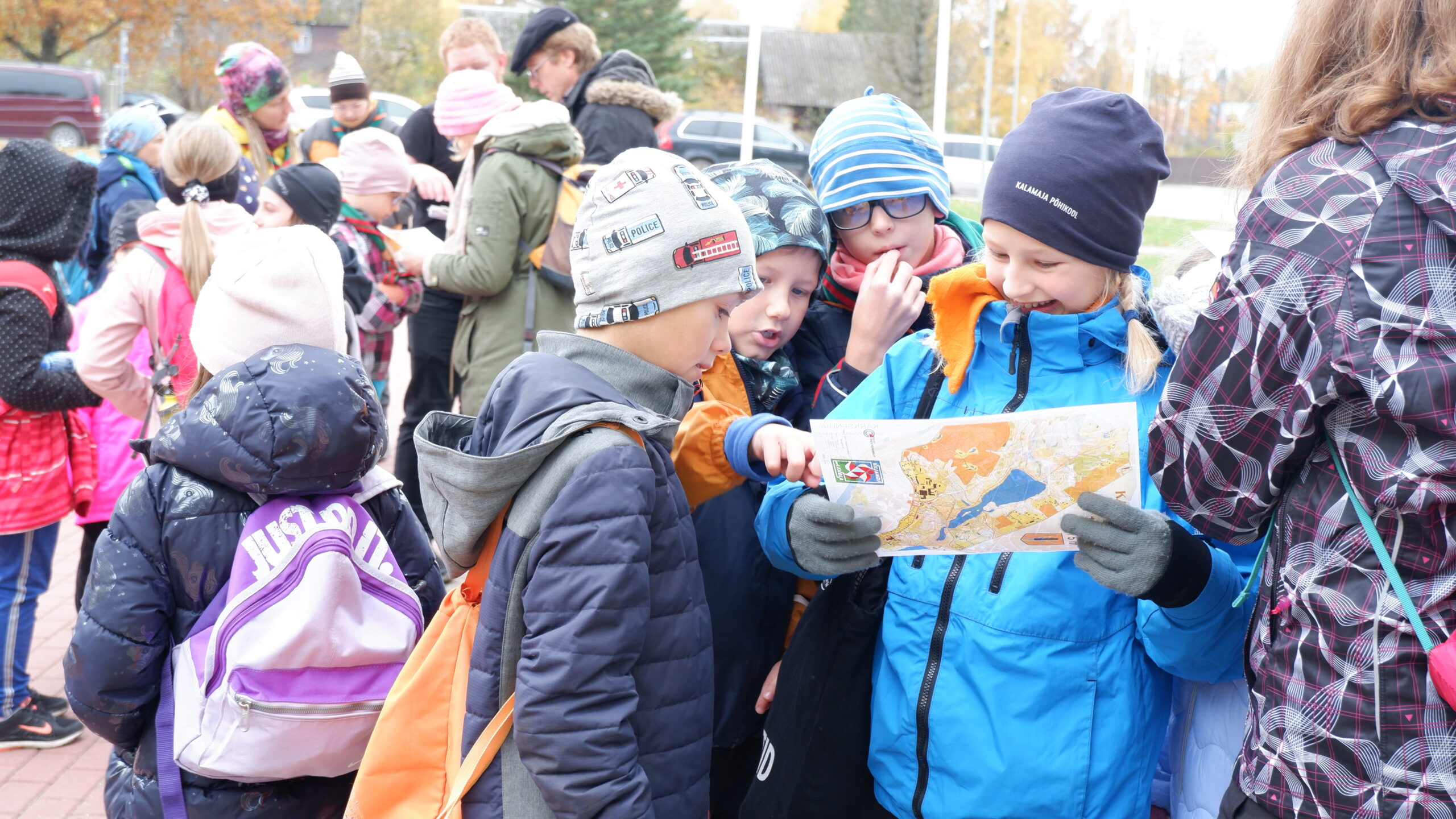
Kriimsilma laager oli väga armas! See oli minu, mu hundude ja Bruna esimene Kriimsilm. Emotsioone oli palju ja laager meeldis kõigile! Reedel oli olemine veel natuke kaootiline ja võõras, aga pühapäevaks olid kõik laagri rütmi langenud.
Me mängisime mänge, osalesime Mulgi kultuuri (lina kasvatamine, tantsud) töötoas ja käisime matkal. Matk oli väga lahe- kõik osalejad olid jagatud segagruppidesse ja ülesandeid oli seinast seina. Saime nii telke püstitada, lõkkeid süüdata, oma ronimisoskuseid testida ja mulgiteemalisi ülesandeid nuputada. Peale matka ootas meid koolis ujumine ja maitsev õhtusöök. Menüü ületas kõigi ootusi ja Mulgi toit viis keele alla!
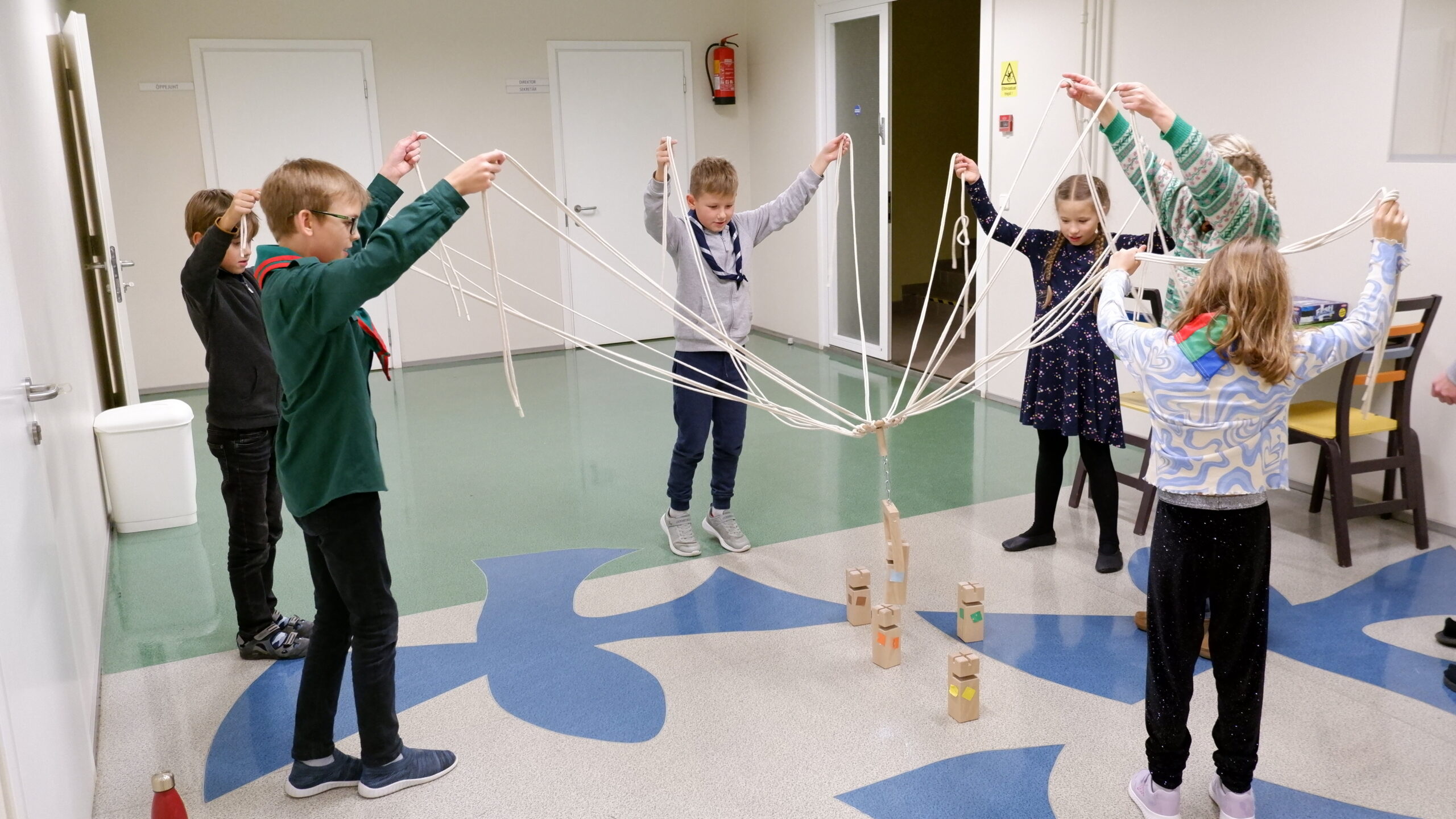
Õhtul oli osalejatel aega omavahel mängida ja loovad hundud lõbustasid üksteist ise. Kuigi alguses tundus, et programmi jäetud vabad õhtud põhjustavad liialt igavust, siis lõpuks oli kõigil lõbus- istuti mänguringis, õpiti sõlmi, jutustati niisama, mängiti palli ja aeti üksteist mööda kooli taga.
Minu arvates oli tegu väga hea sümbioosiga: programmi oli täpselt nii palju, et kaost ei tekiks, aga vaba aega ise oma aja sisustamiseks jagus piisavalt. Laager oli väga edukas- kõik osalejad said uusi sõpru ja nägid juba vanu tuttavaid ning tutvusid Mulgimaaga!
-Tuuli, Ökoskaut, hundusalga juht
On Friday night, 14 of october, I arrived at the Kriimsilma Laager to participate in my very first scout camp in Estonia. Everything looked very different from the camps I used to go to in Brazil, but at the same time, so similar. Few minutes after arriving at the school, and figuring out the language barrier, I found my cubs and co-leader, who were amazing at showing me around and explaining how the sleeping accommodations would work. The cubs were so nice and they looked a bit excited that I was not even close to knowing the Estonian language.
Saturday morning started with a nice exercise outside of the school which gave us the opportunity to breathe the cold and nice air before going to have breakfast. After eating, we gathered outside to start the hike! The cubs were so excited about it and it was amazing to see how they shared the responsibility to guide our group following the map, how they worked as a team to face the difficulties, and how creative they got when facing the challenges that were proposed. Along the way, “my” cubs were teaching me Estonian and a lot of words that I might need. It was really beautiful to see how they put the effort to teach me how to pronounce the words and also, being really patient when I mispronounced almost every word they were teaching me.
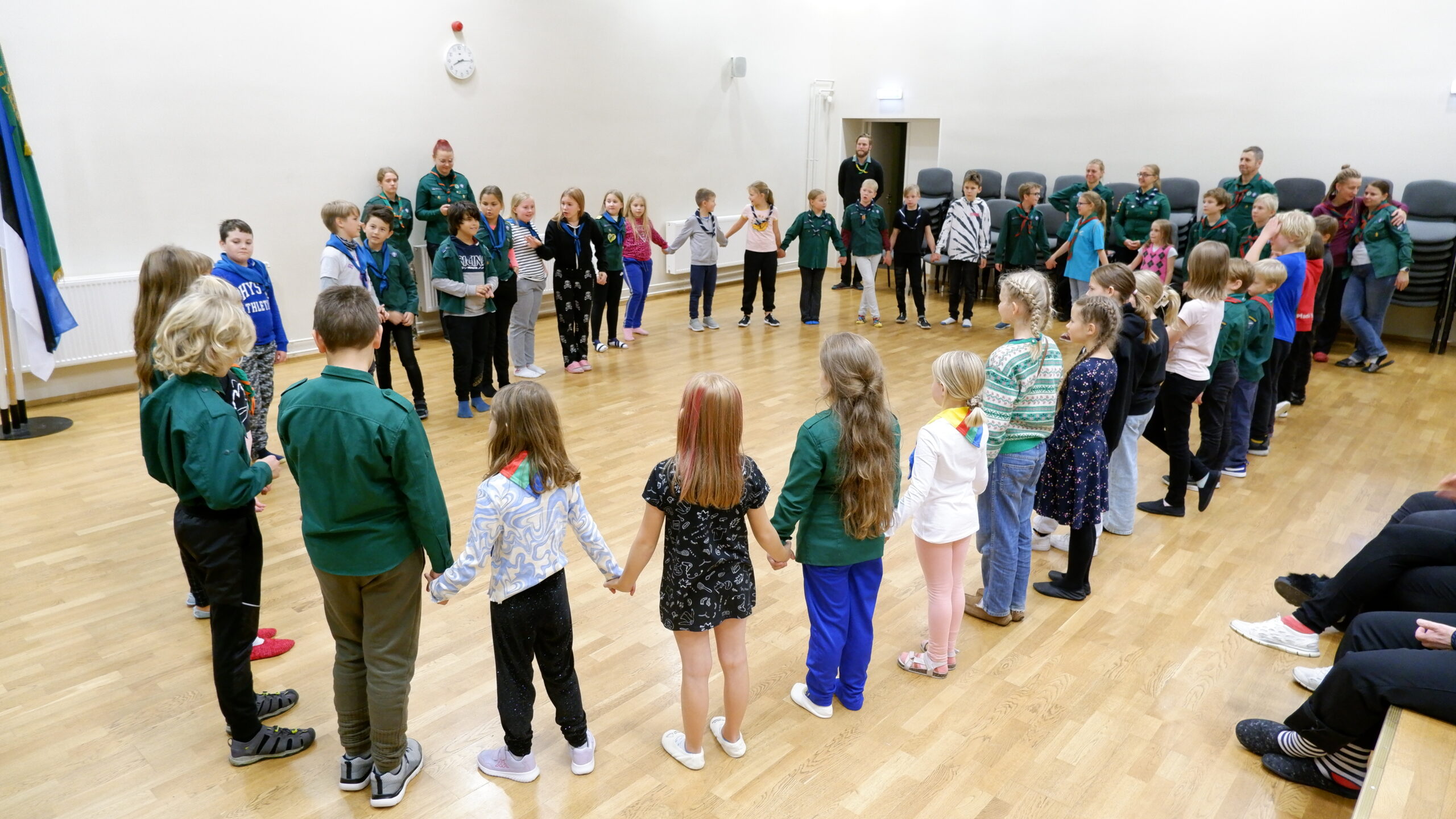
Sunday started with an amazing pancake and nice conversation for breakfast. Afterwards we went to a presentation about Estonian Culture that seemed interesting. I confess that I couldn’t follow the presentation since I don’t speak Estonian yet, but I was amazed by the singing and the nice environment that was created by it. The presentation was followed by the closing ceremony, where I was able to wear my Brazilian Scout Uniform and cherish other groups about their achievement in the camp.
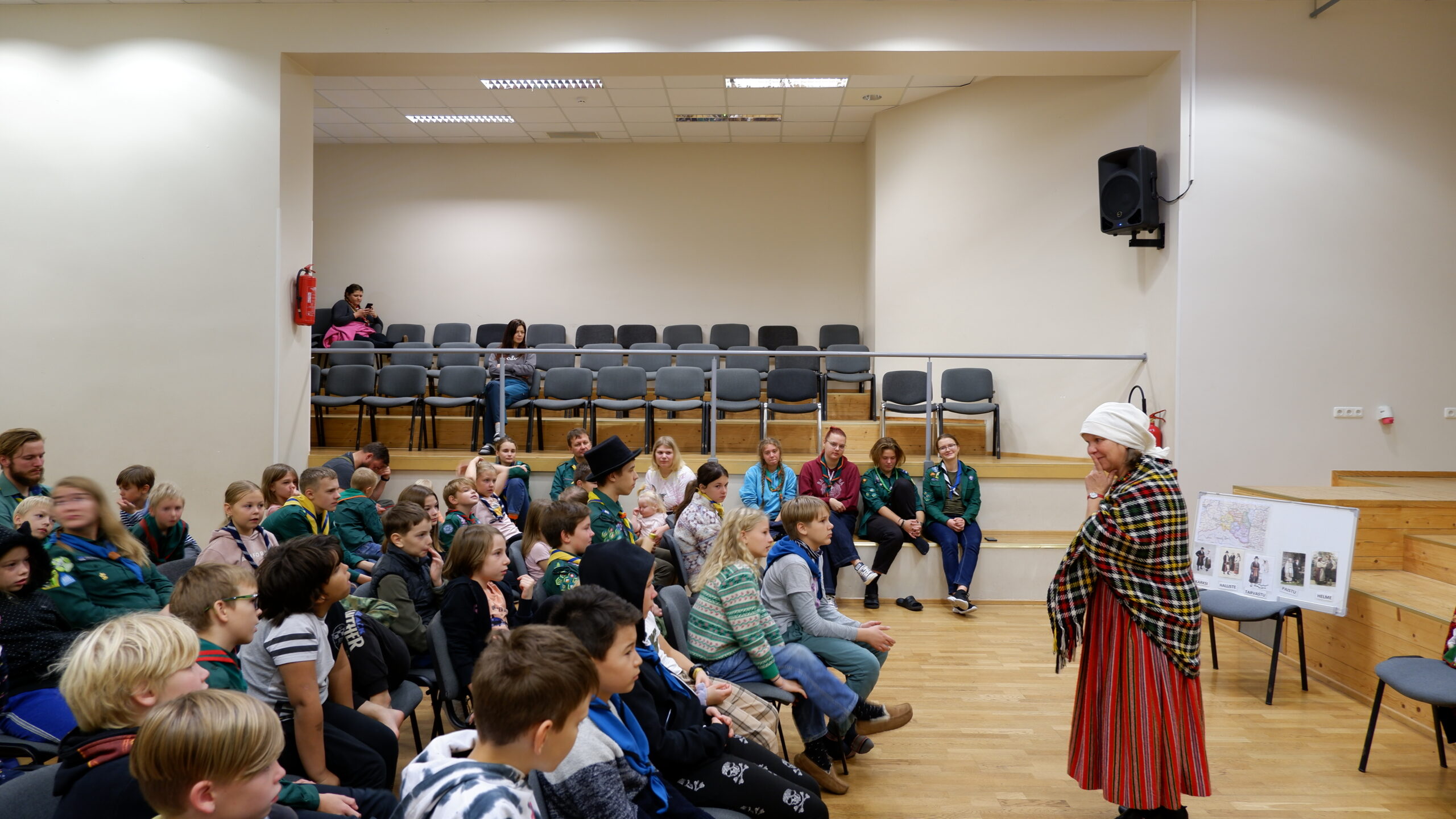
I moved from Brazil to Estonia a couple months ago and I am still looking to find my place in a country that is different from what I know, and that I’m looking forward to not only call, but feel that it is my home. This camp gave me the feeling that even far away, the Scout Movement still makes me feel home, brings people together and that makes my heart glow towards something I love. I’m glad to call myself part of the Scout Movement in Estonia and I’m looking forward to the next camps and gatherings!
-Bruna, Ökoskaut, hundusalga abijuht
Main contacts
Estonian Scout Association (ESÜ)
Legal and postal address: Juurdeveo 22A-2, Tallinn 11313, Estonia
Registry code: 80048529
Billing account in LHV bank: EE687700771000674448
The office of ESÜ is located in Tallinn (Juurdeveo 22A-2). At the office you can get info about the events and happenings of the ESÜ as well as purchase scout merchandise and insignias and borrow scout literature and equipment.
The office doesn’t have regular operating hours. If you wish to visit please call or write to us beforehand so we can arrange a meeting.
Office phone number: +372 5344 5171
E-mail: info@skaut.ee
Participation in the activities and events of the Estonian Scout AssociationThe Estonian Scout Association (ESÜ) acts on the principle of volutary service. Which means that the leaders who regularly carry out activities and go along to events with the youth are volunteers. Only members of ESÜ (except for special events) can take part of the activities and events of the Estonian Scout Association. To join ESÜ a parent has to fill out the members form and pay the members yearly fee. If the member who wants to join is a child then you’ll have to find a suitable group and contact them to find out if they have the possibility to take on new members. When you get their consent you’ll have to fill out the members form and pay for the yearly members fee.
Special events that everyone can take part of:
- Lecture “Welcome to Scouting”;
- ERNA hike;
- Father’s Day hike.
ESÜ information list
The information list is open to the public and everyone who’s interested in joining doesn’t have to be a member of ESÜ. The parents who have expressed that they want to join the list while filling out their child’s registration page will also be added. Once a month, we send e-news and other important information about the organization or its activities to the list.
- To join or leave the list, send an e-mail to: info@skaut.ee.
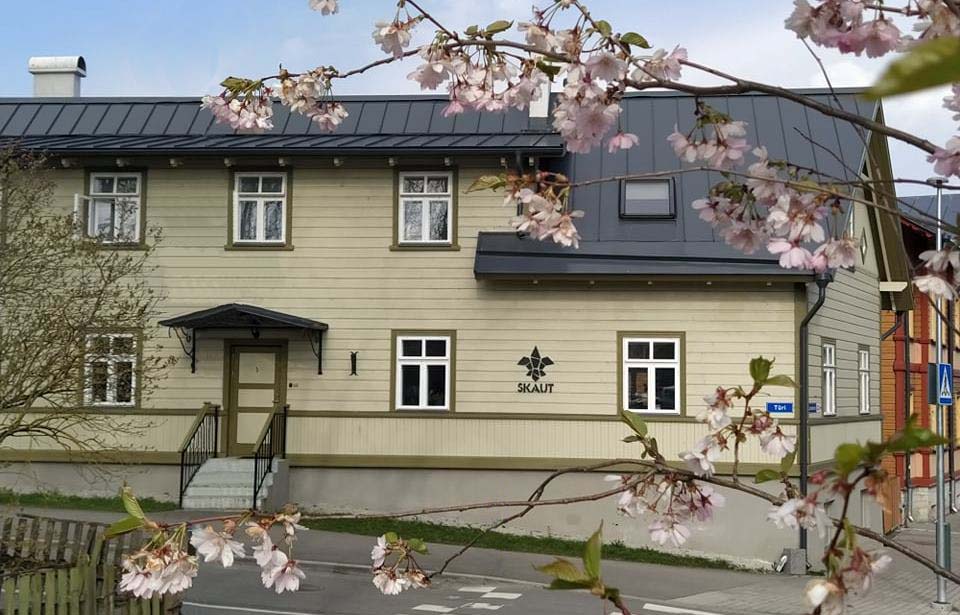
Photo: Monika Ojala
Board Committees
The Estonian Scouts Association has working groups working with board members. The groups are composed of scouts who are particularly interested in the field. The working group helps to reduce the workload of the board members and allows for discussion and idea gathering in a smaller circle. If you are interested in joining a working group, please contact the board member responsible for the field. In the working group, you can get to know the behind-the-scenes of the board member’s work, share your thoughts, and hopefully gain motivation to run for the board yourself.
PERSONNEL MANAGER’S WORKING GROUP
The focus of the Personnel Manager’s Working Group is on the retention of ESÜ volunteers, including the organization of events for adult members and board members; ensuring that leaders are taken care of at events (leader’s café); meeting with unit leaders and organizing the Leaders Club, as well as general documentation (writing reports/applications).
Members:
- Janne Rechlin (personnel manager)
- Katri Pruulmann
- Veeda Kala
- Britt Heleen Valgepea
Contact: personal@skaut.ee
ECONOMIC MANAGER’S WORKING GROUP
The Economic Manager’s Working Group is responsible for the preparation of activity grant applications, the search for new funding sources, and the retention of long-term supporters.
Members:
- Gregor Pihlak (economic manager)
- Kristjan Pomm
- Helen Hiiemäe
- Sofija Fisher
Contact:
majandus@skaut.ee (Gregor Pihlak)
PROGRAM MANAGER’S WORKING GROUP
The Program Manager’s Working Group is currently being formed.
Members:
- Peeter Aleksander Paju (program manager)
Contact: programm@skaut.ee
Office
Members coordinator: Annika Viigand
Email: annika.viigand@skaut.ee
- Membership forms and membership payments
- Supporting the units
- Handling the materials for youth programs
- Social media administration
Administrative Coordinator: Sirje Pool
Email: sirje@skaut.ee
- The administration and booking of the Tagametsa Camping Center
- The scout shop and the ordering of scout uniforms
- Warehouse management and borrowing equipment from ESÜ warehouse
- ESÜ information mail and phone
- Newsletter, cooperating with the Commissioner of Communications
Unit Support Person: Monika Ojala
E-post: monika@skaut.ee
- Supporting the regional corps of ESÜ
- Recruiting volunteers
- Supporting the board with training, program and staff
- Administrative coordinator to “Tere Tulemast Skautlusesse, large camp “Silmapiir”, “Väikesaar”, “Skautlemise Meistriklass”, “Isadepäeva matk”, training programm “Inspiratsioon”

Before coming to the office please call 53445171 to announce your arrival so we’d know to be present.
Isadepäeva matkad 2022
Foto: M. Undusk
Sel aastal toimusid taaskord traditsioonilised isadepäeva matkad erinevates Eesti piirkondades. Matku vedasid eest seitse üksust ning mõned neist on ka oma matkad kokku võtnud ning kirjaridadesse seadnud. Matkaliste ja korraldajate kogemuslugusid saab lugeda all olevast uudises.
Tartumaa Skautide ja Gaidide Malev
The Story of Czech Scouts on Estonian Father’s Day Hike
Who went to the Father’s Day hike could be surprised by meeting there in the middle of forest two scouts from Czech Republic. This is the story of how it happened.
When I went to Tartu for my Erasmus+ stay, meeting local scouts was one of the things on the top of my bucket list. Fortunately the scout community all around the world is so open that I was quite immediately offered to participate in organizing this Father’s Day hike. Together with Klári – another scout from Czech Republic – we happily accepted.
The work went smoothly without any communication problems I was worried about. It didn’t take long and the day had come. In the beginning, we were sent into the forest without an Estonian interpreter to present our two activities to the families and I was worried again. What if somebody doesn’t speak English? How will we explain our activities with those fifty Estonian words we know? But everybody was speaking English.
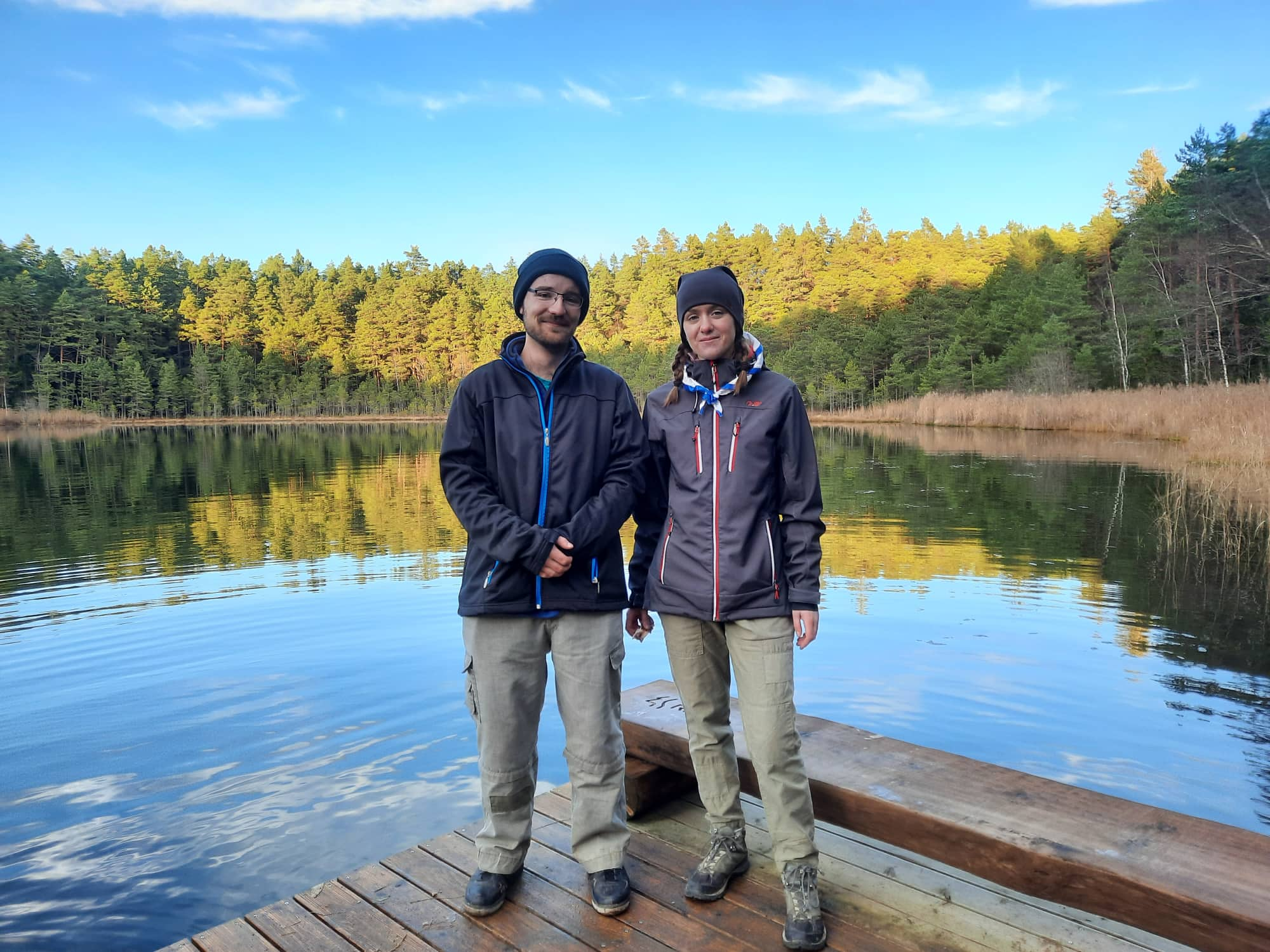
We were alternately teaching Czech phrases, playing forest golf, learning Estonian phrases and trying not to freeze. It seemed that everybody was enjoying our activities and that fact was warming us. Quite sadly, it didn’t take long and it was time to go. The cherry on top was when we returned to the starting point. We heard a Czech greeting. It was quite confused Czech scout studying in Tartu just casually on her Sunday trip.
We are really glad for this opportunity. It was a great experience. Meile meeldib Eesti. Suur aitäh!
-Petr, Tšehhi skaut, korraldusmeeskonna liige
Isadepäeva matk oli väga tore. See oli täpselt paras ka väiksemate jaoks. Ilmaga vedas meil samuti. Matkapunktid olid väga vahvad ja põnevad, kindlasti meeldis paljudele metsa-golf ja da Vinci sild. Kogu matk oli võrratu, punktid olid väga vahvad ja toredad. Suur-suur aitäh Mariannele ja teistele korraldajatele selle imelise matka eest.
-Tuule, 9-aastane matkal osaleja, TSGM hundu
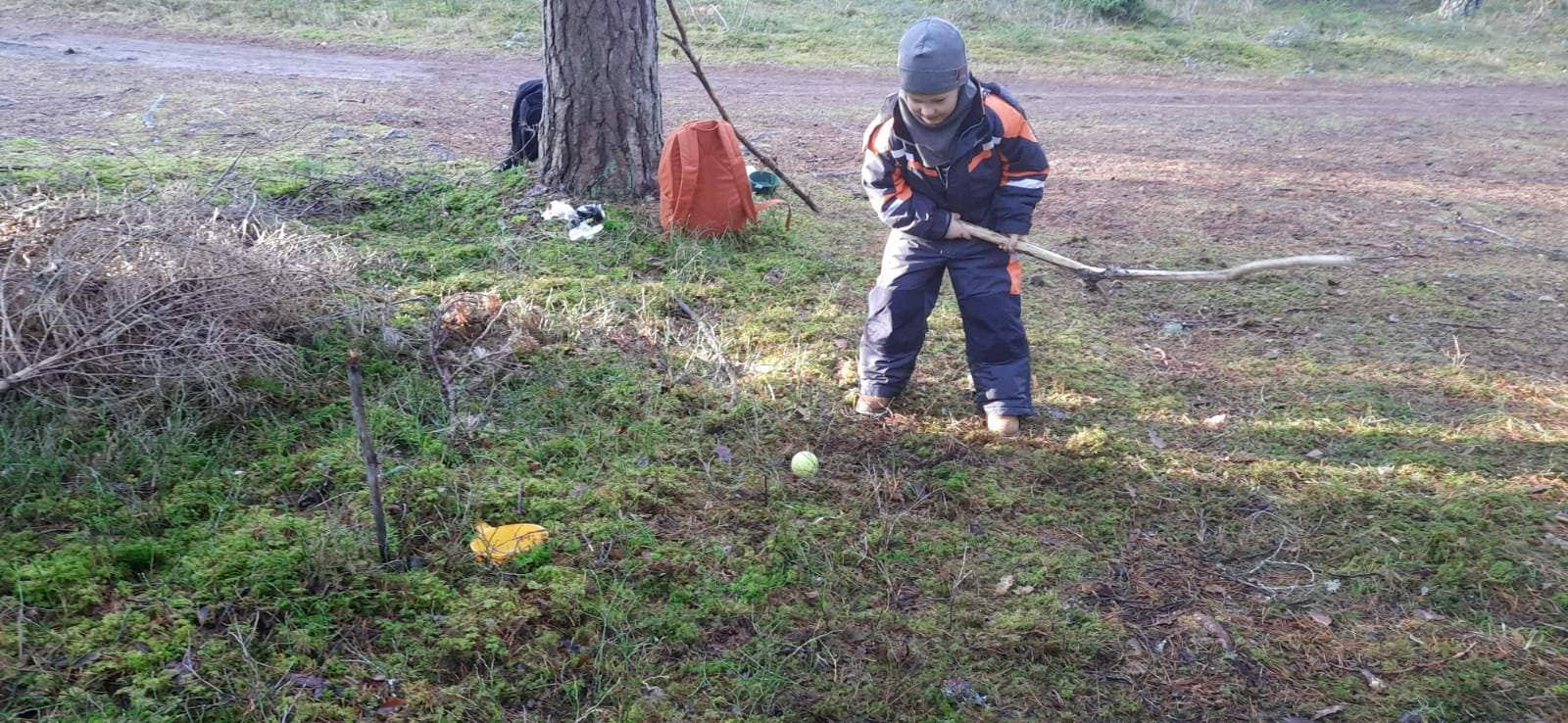
Tartu skautide Isadepäeva matk 2022 toimus 13. novembril Tartust ca 30 km kaugusel Vitipalus Umbjärvede ümbruses. Tegevuspunktide planeerimisel lähtusime sellest, et osalejad on väga erinevas vanuses, proovisime teha meeskonnatöö ülesandeid ning lisada ülesannetesse meeskonnatöö elemente. Peale matka kutsusime osalejaid lõkke äärde nautima sooja piparmündi teed ja sööma kringlit ning uurisime nende elamuste kohta. Tagasisides kiideti väga ohtralt tšehhi skautide metsagolfi ja tšehhi keele telefonimängu, erinevatele osalejatele jäid meelde erinevad punktid. Negatiivset tagasisidet ei olnudki, ja kõik metsa saadetud grupid saabusid edukalt ka metsast tagasi. Korralduse poole pealt oli meil hea kogemus rahvusvahelises tiimis, kuna meiega liitusid 2 tšehhi skauti. Ettevalmistavad koosolekud toimusid kõik inglise keeles, millega noored väga edukalt toime tulid. Kiidan väga oma meeskonda, kellest enamikku kohtasin selle projekti raames esimest korda! Oli tore kogemus!
-Marianne, TSGM, peakorraldaja
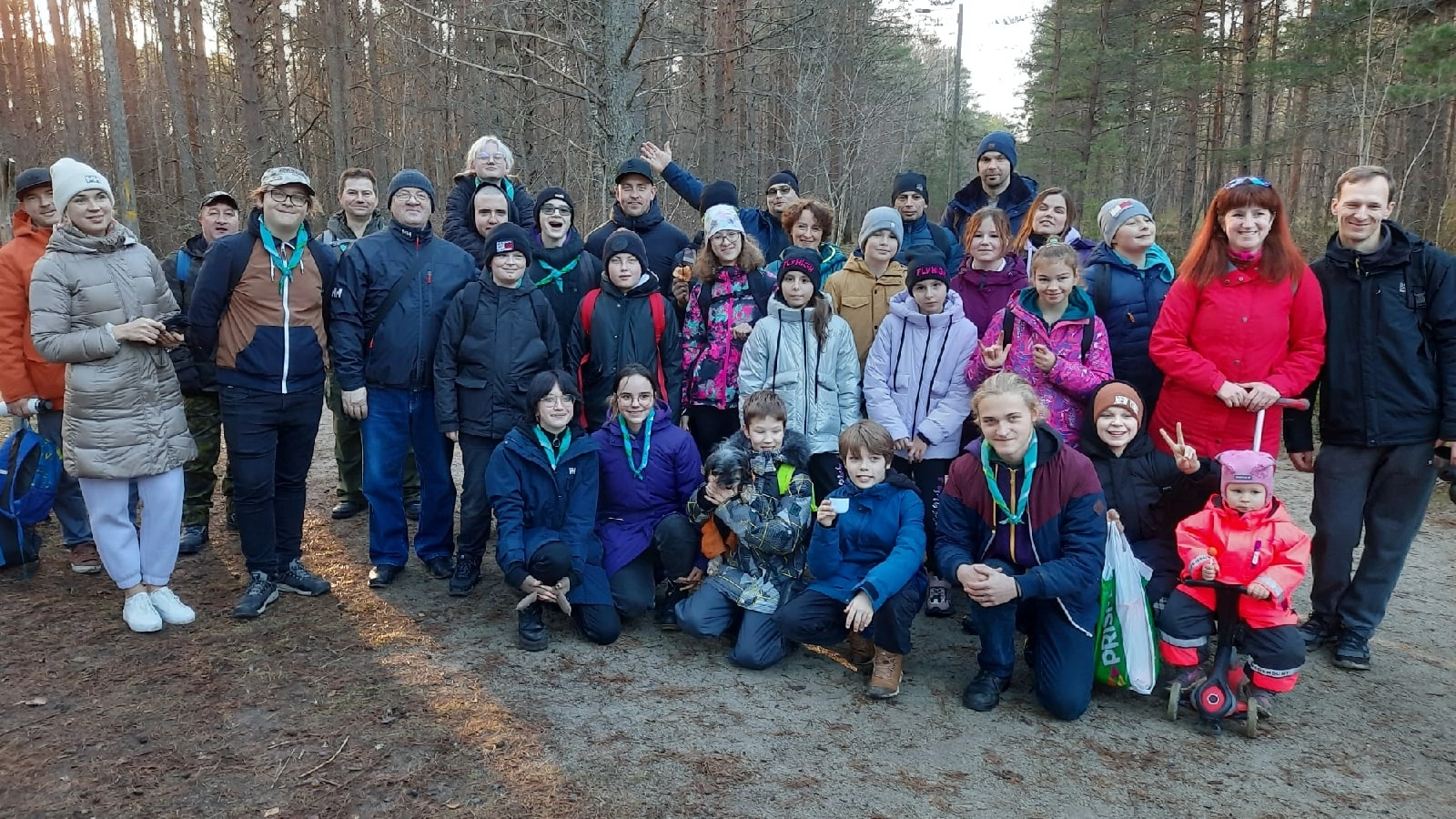
Rävala Skautide Malev: Siil
Pühapäeval, 13. novembril, korraldas skaudisalk Siil isadepäeva tähistamiseks matka. Matk toimus Nõmmel, Pääsküla raba matkarajal. Matk oli 4,5 kilomeetrit pikk ning matkal läbisid osalejad seitse erinevat matkapunkti. Kokku võttis matkast osa 5 meeskonda, igas meeskonnas 13-20 inimest. Skaudid veetsid oma perega toredalt aega ja tähistasid üheskoos isadepäeva! Suured tänud esimesele patrullile matka korraldamise eest!
-Polina, Siil
Rävala Skautide Malev: Põhjala
Põhjala kohtus isadepäeval Pikakaril, kohal oli sellel korral 7 pere ja muidugi olid esindatud kõik isad. Tegime matkamängu, millest said osa võtta erinevas vanuses lapsed ehk et kaasatud olid ka perede kõige pisemad. Punkte, mida sai koos peredega lahendada, oli kokku 10.
Lastele meeldis eriti rannas kividest tornide ehitamine, palju põnevust tekitasid erinevad meelte kimimängud ja muidugi oli elevust palju kui lapsed said isadelt küsimuste kaudu teada nt nende kõige suuremad pättused kui nemad väikesed olid. Matkamängu lõpus sõime kaasatoodud piknikutoite ja koduteed jäi saatma meeleolukas skaudimäng.
-Marit, Põhjala, peakorraldaja
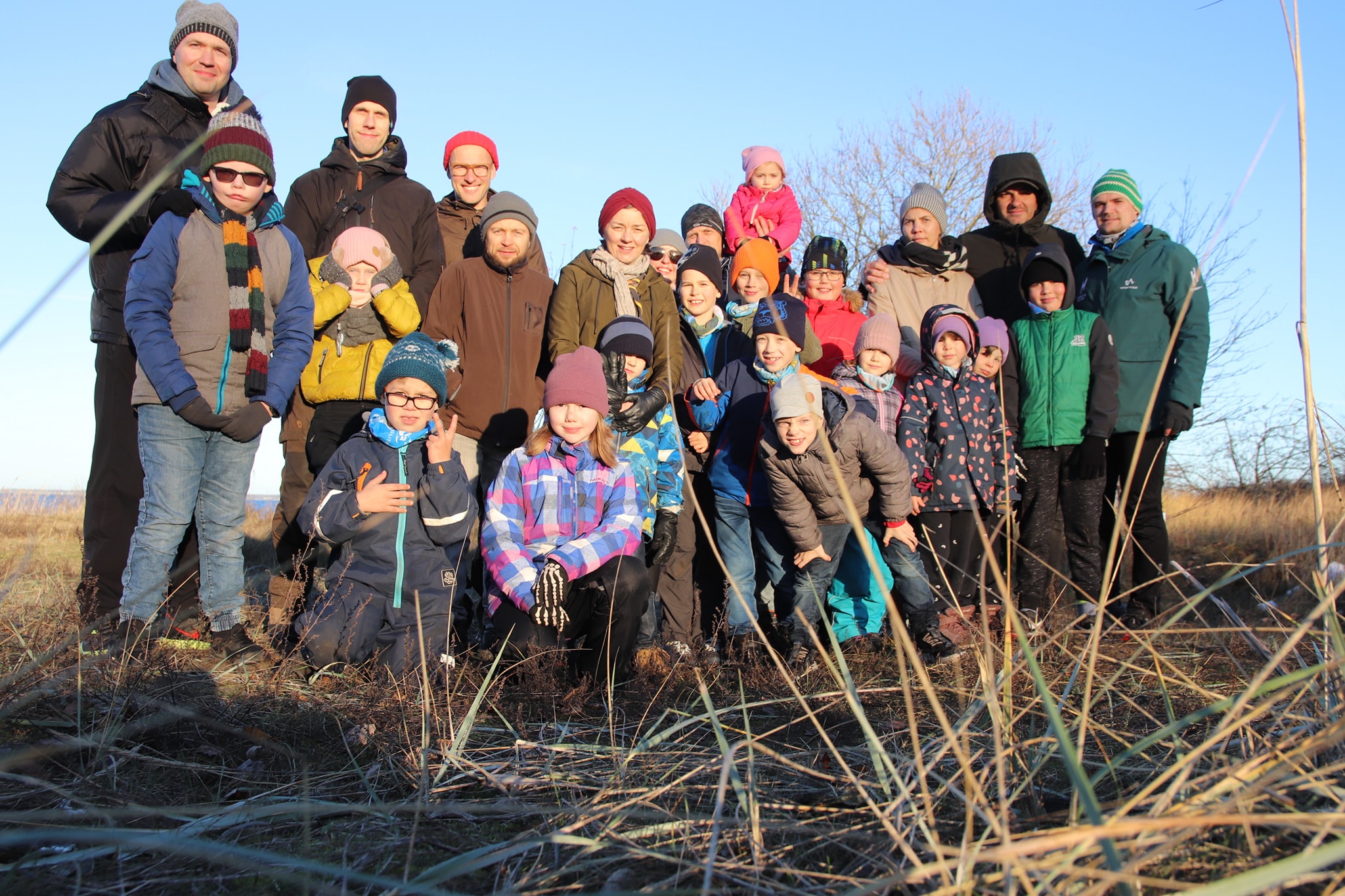
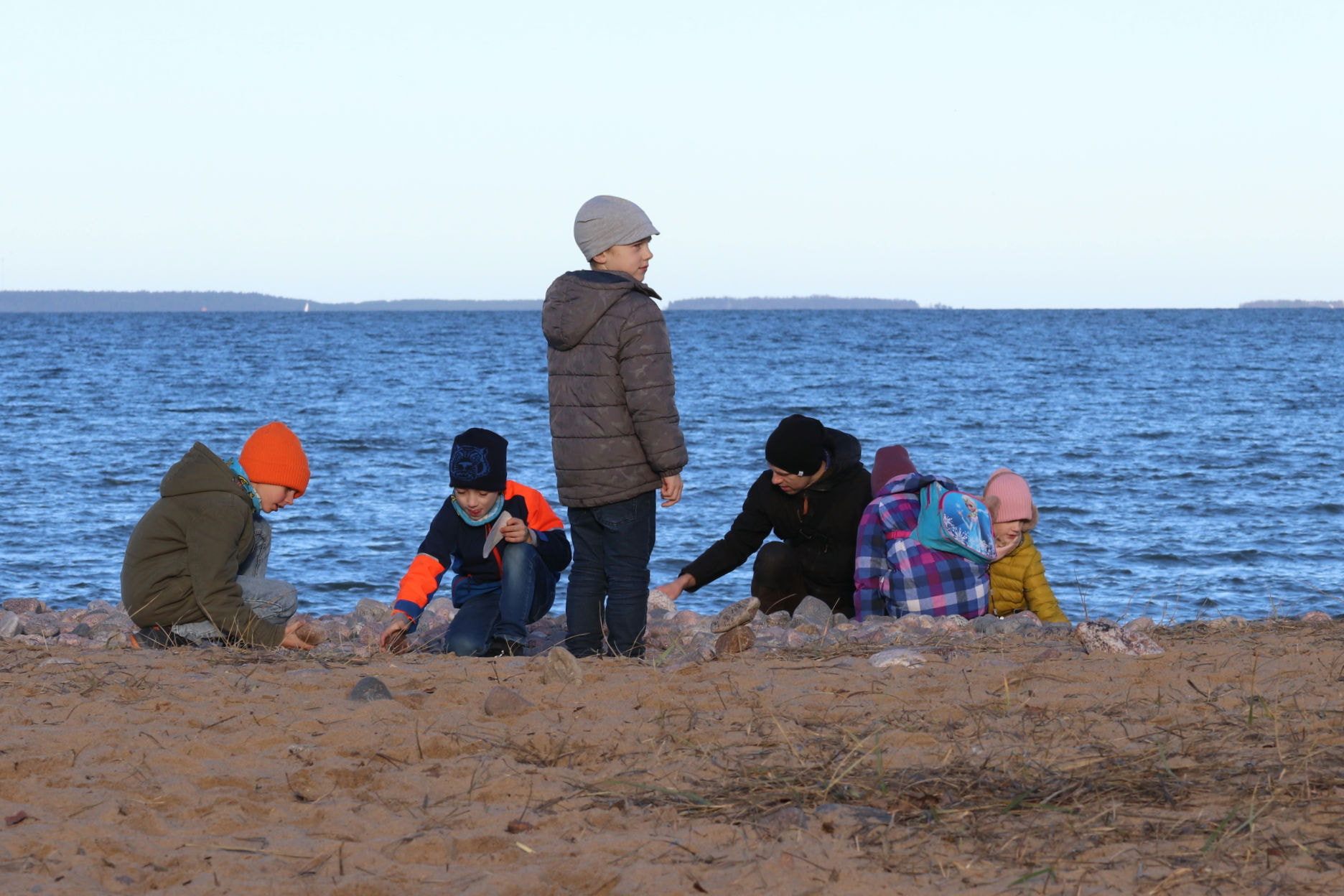
Selle aasta isadepäeva matk toimus väga ilusa ilmaga. Matkasime Mulgi vallas nautides imeilusat sügisest loodust ja tegime kaasaskantavas ahjus tuld ning keetsime seal mune. Karksi Paisjärve ääres tegime traditsioonilise lõkke, kus sai vorstikesi, saia/leiba, juustu küpsetada ja teed keeta.
-Artur, Metsavahe, peakorraldaja
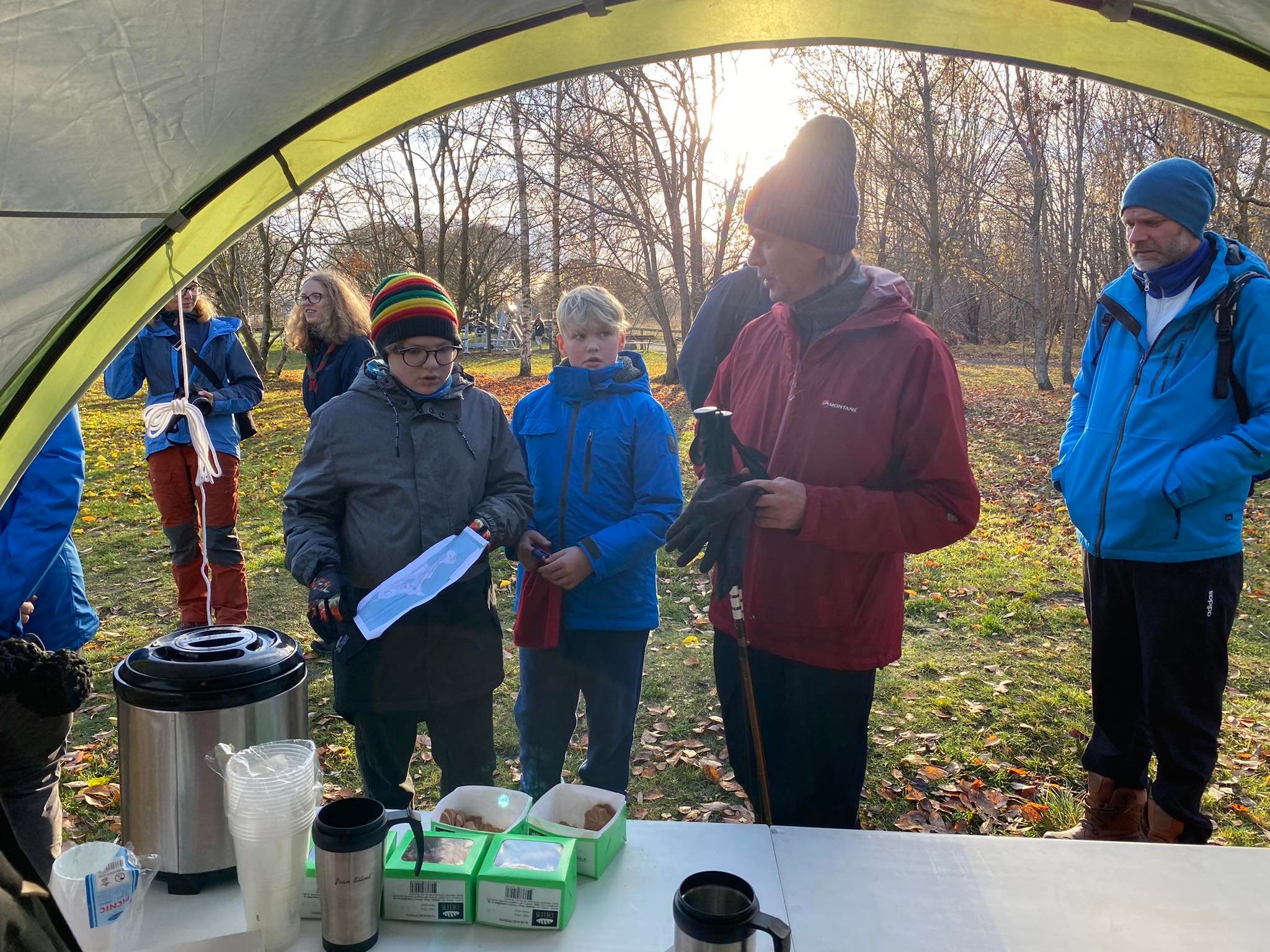
Rävala Skautide Malev: Tormilind
Rävala maleva selleaastast isadepäeva matka korraldas skaudilipkond Tormilind. Valisime matka asukohaks Paljassaare. Meie teada ei ole skaudid seal varem matku korraldanud, mistõttu arvasime, et see oleks kõigile hea ja uudne kogemus. Matk oli 8km pikk ning kiiresti kõndides sai raja läbi umbes kahe tunniga. Valmistasime punktid ette nii, et osalejad pidid meelde tuletama oma skaudioskusi ja kasutama oma kujutlusvõimet, et ülesandeid täita. Täname kõiki, kes tulid matkal osalema! Kõik 10 gruppi olid väga tublid ning meile tundus, et neil oli väga meeldejääv kogemus!
-Merili, Tormilind, korraldus
The Foundation of Estonian Guides Association and Estonian Scouts Association
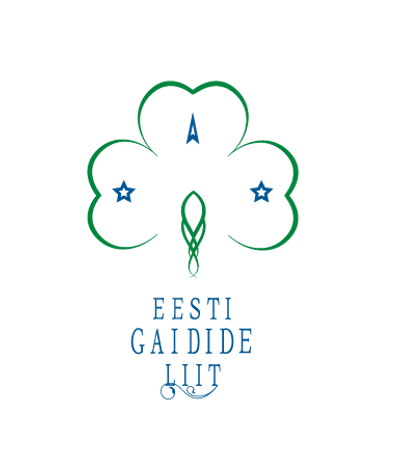
The Foundation of Estonian Guides Association and Estonian Scouts Association was established in 1999 with the initiative and support of the Estonian American Fund to support the activities of Estonian scouts and guides in Estonia. The foundation’s endowment fund consists primarily of donations from Estonian Americans. The first chairman of the board of the foundation was Ago Ambre from the Estonian American Fund, and the chairman of the board was Kristjan Pomm from the Estonian Scouts Association.
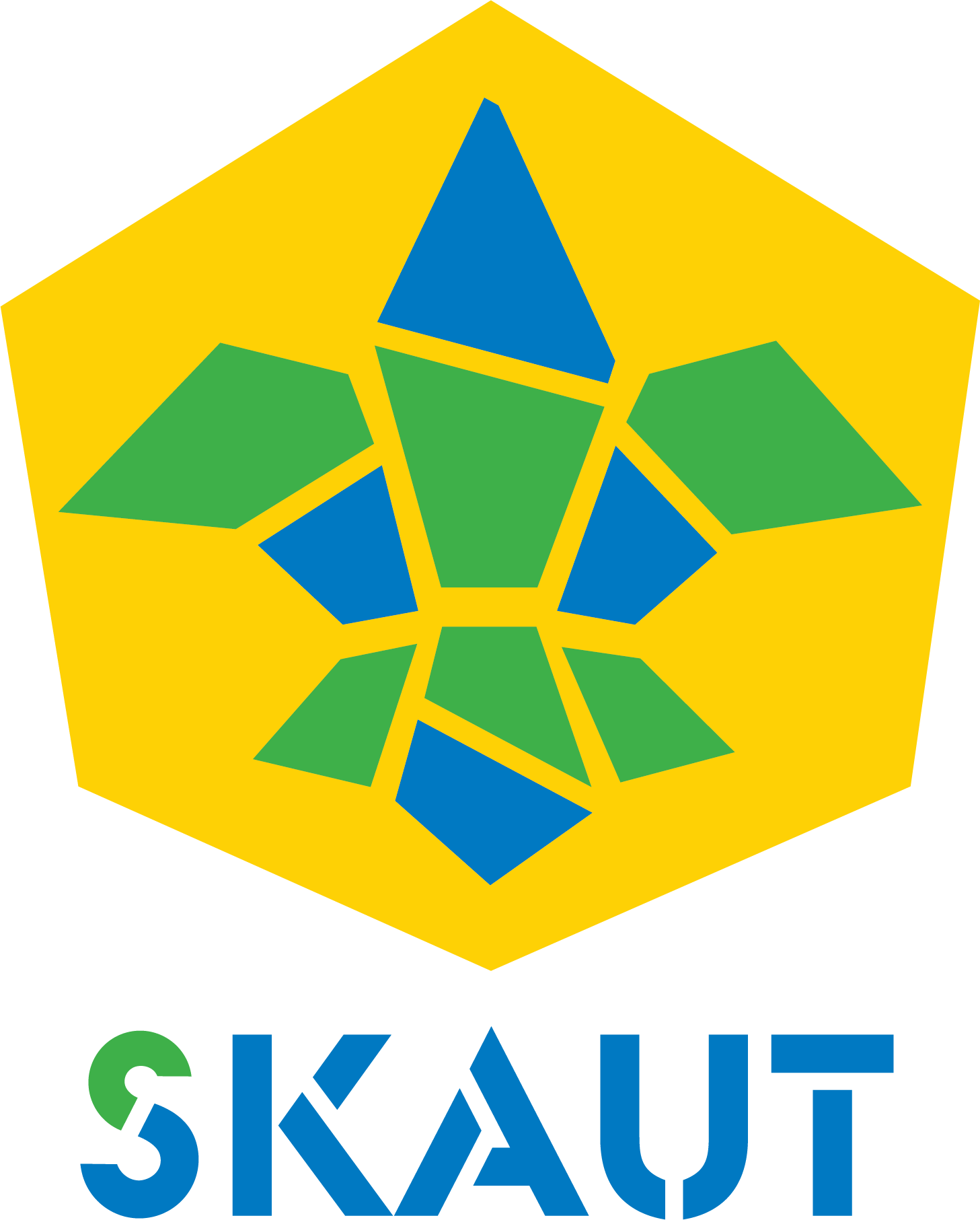
Job Bites
Job bites were born out of the busy schedule all of the adult scouts have in our organization. We have more tasks to do than people assigned in the HQ. Thus was born the list of tasks anyone could take up and feel accomplished after – no long term commitment. It is a win for everyone. And for every done job bite you get an apple.
Job bites we have active at the moment:
- creating a different scout units neckerchief collection
- thinking out new souvenirs for the scout store
- preparing activity points for different hikes
- thinking out new scouting skills
- sewing bags for the flags
- translating the rules of procedure of the Tallinn Scout House into Russian
- translating the rules of procedure of the Tagametsa camp center into Russian
- designing a flyer for the Tagametsa camp center
- organizing the scout archive
- development the scouting skill “Trainer”
- developing the scouting skill “Knowing Plants”
- developing the scouting skill “Flag Actions”
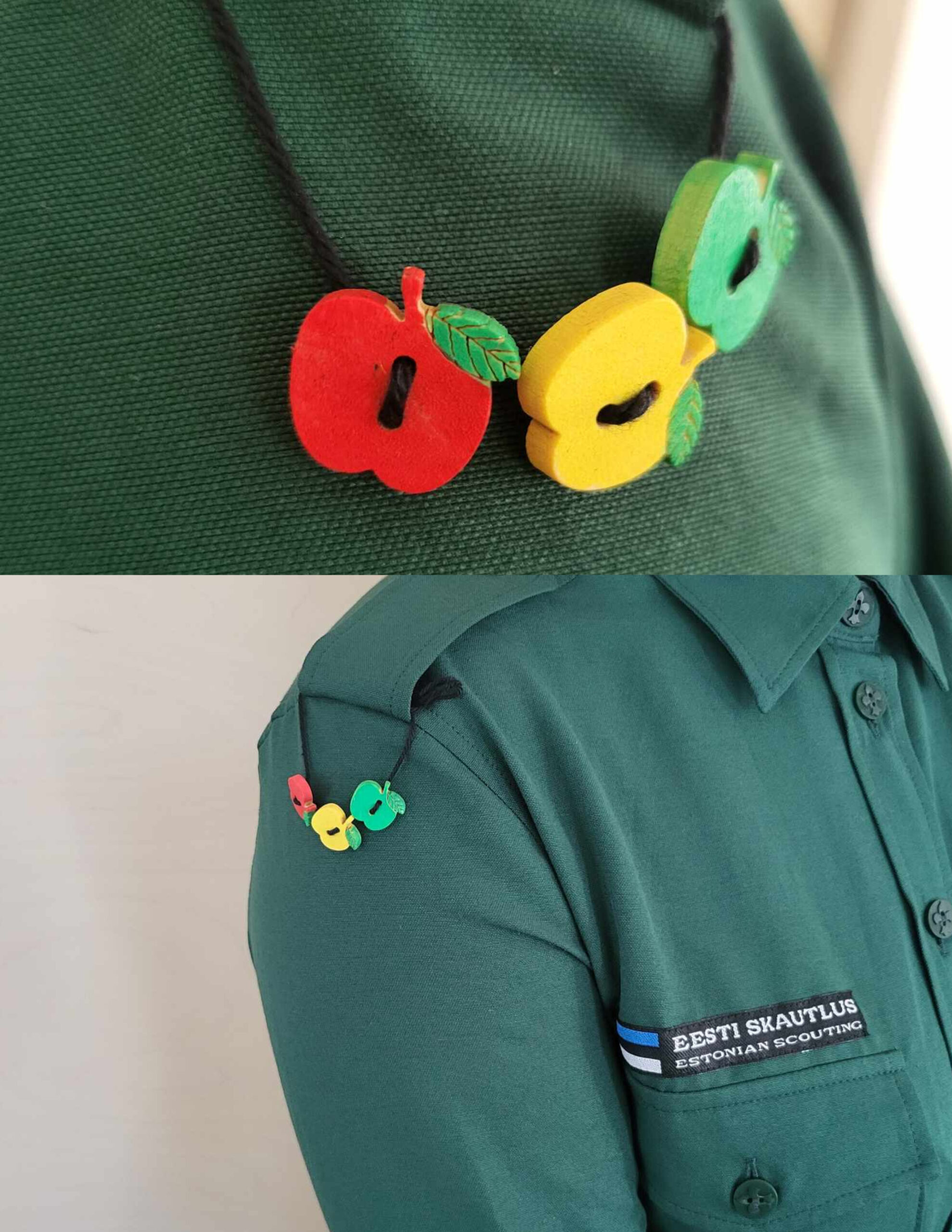
Vabatahtliktöö Islandi skaudikeskuses
Volunteer in Iceland – at their wonderful scout centre!
Úlfljótsvatn Scout Centre, the Icelandic national Scout Centre is continuously looking for summer volunteers!
Volunteering Opportunities for International Scouts
The team that runs the daily operations at our centre are our International Volunteers. A team of motivated Scouts and Guides from all over the world come for 3 to 9 months to help run the centre while developing skills, growing in themselves, and experiencing a new side to Scouting. Do you want to be part of the magic, enjoy the wonderful nature of Iceland and the company of fun scouts from different countries?
Then check out the current opportunities at https://ulfljotsvatn.is/job-opportunities/.
The opportunities for the coming summer are usually published in the winter with an application deadline in February.
Lisaküsimuste korral kirjuta Eesti Skautide Ühingu välissuhete juhile international@skaut.ee
Board members
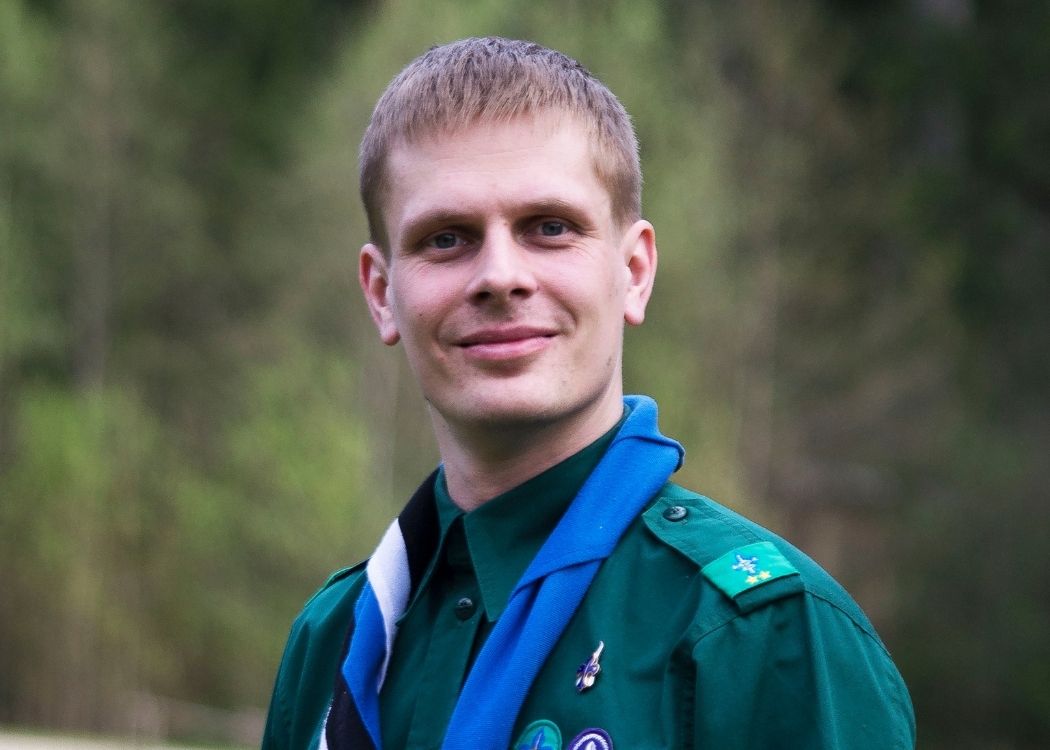
Chief Commissioner and Deputy CFO: Ragnar Luup
Email: skaut@skaut.ee
Ragnar’s responsibility is to lead the organization, board members and office workers.
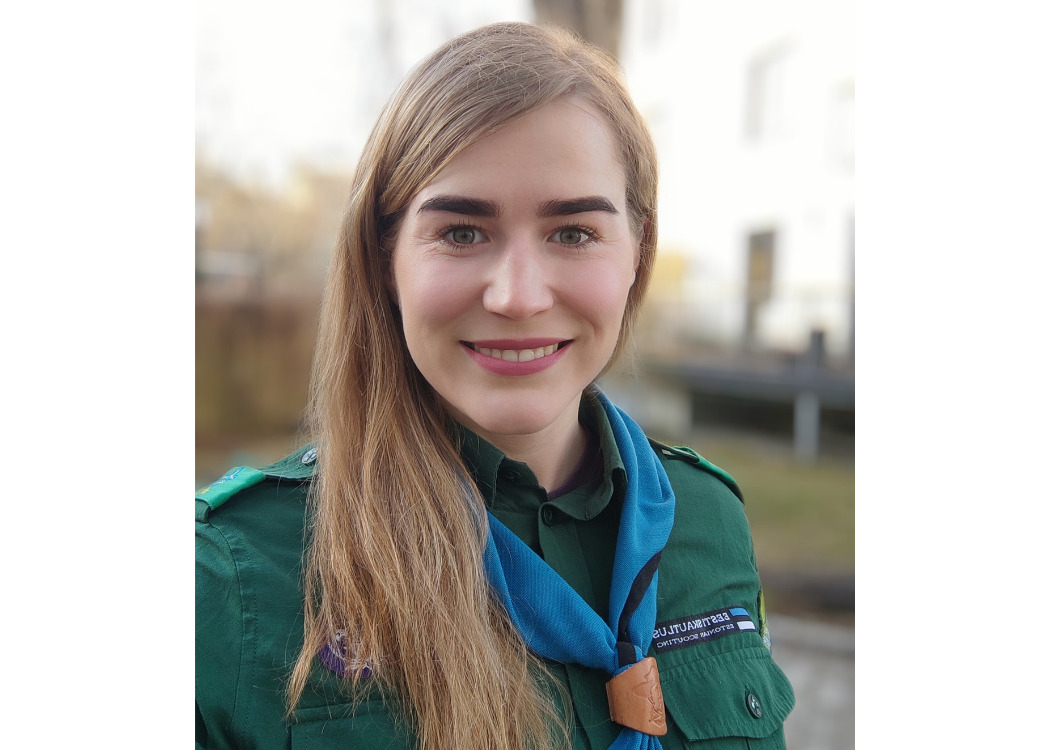
Commissioner of Human Resources: Janne Rechlin
Email: personal@skaut.ee
Janne’s responsibility is to take care of the employees, the board, as well as the volunteers.
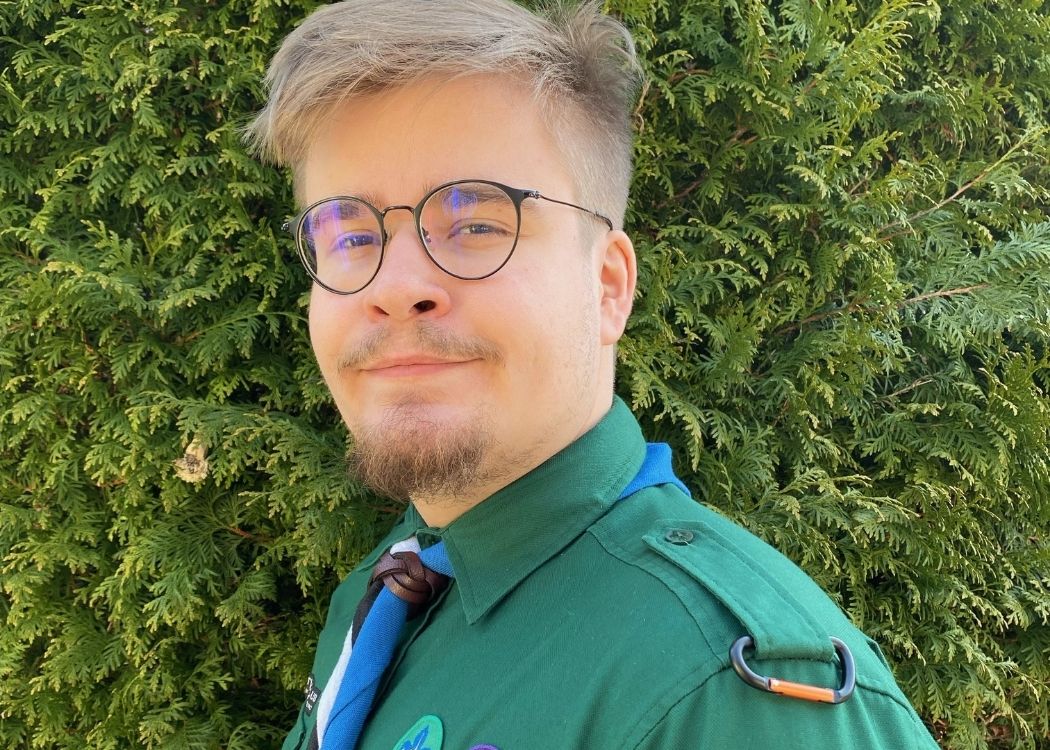
Commissioner of Economics: Gregor Pihlak
Email: majandus@skaut.ee
Gregor’s task is to raise the funds of ESÜ and he’s also responsible for ESÜ’s administrative activities: for example the development of the webpage.
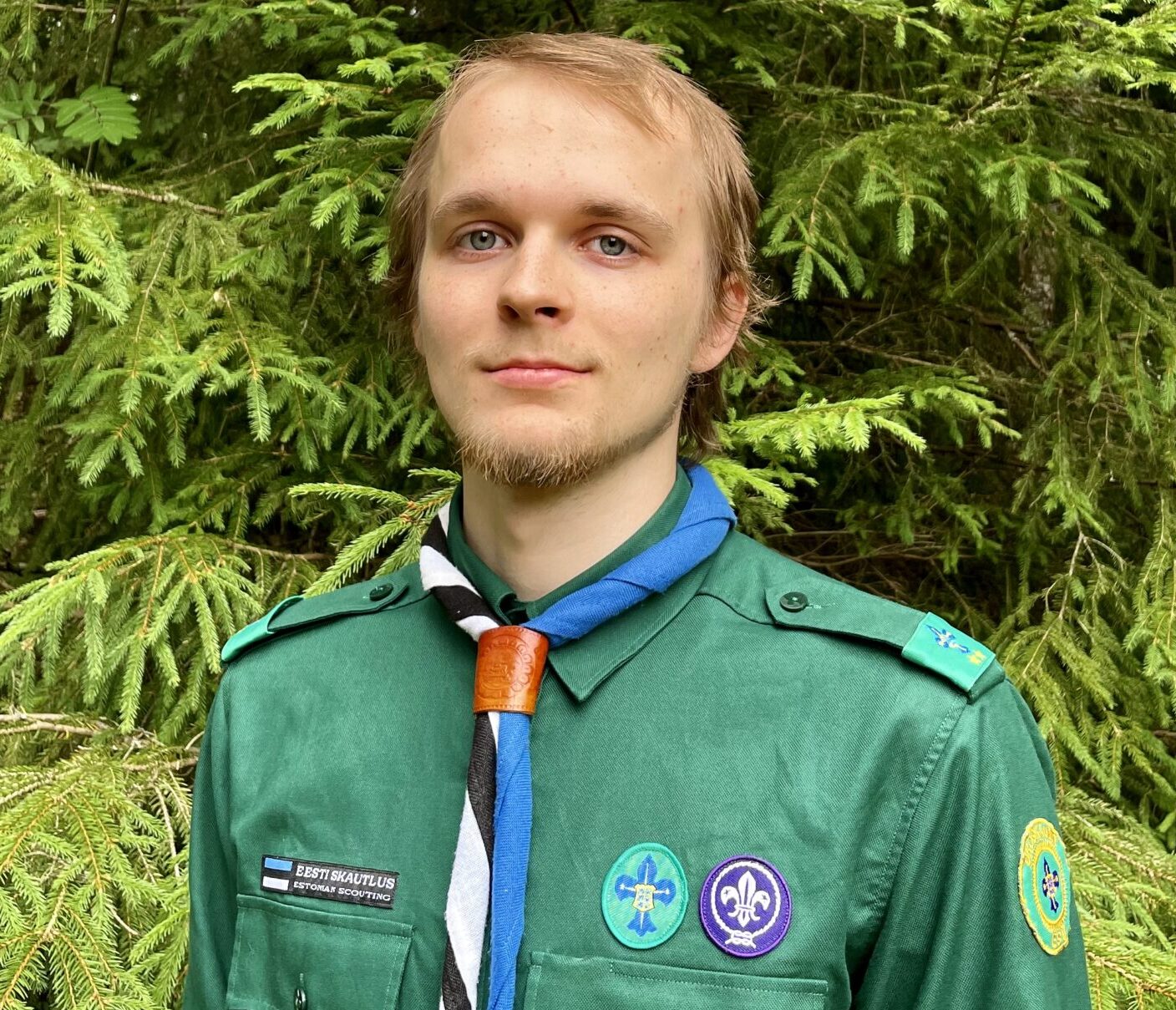
International Commissioner: Jaagup Markus Niitvägi
Email: international@skaut.ee
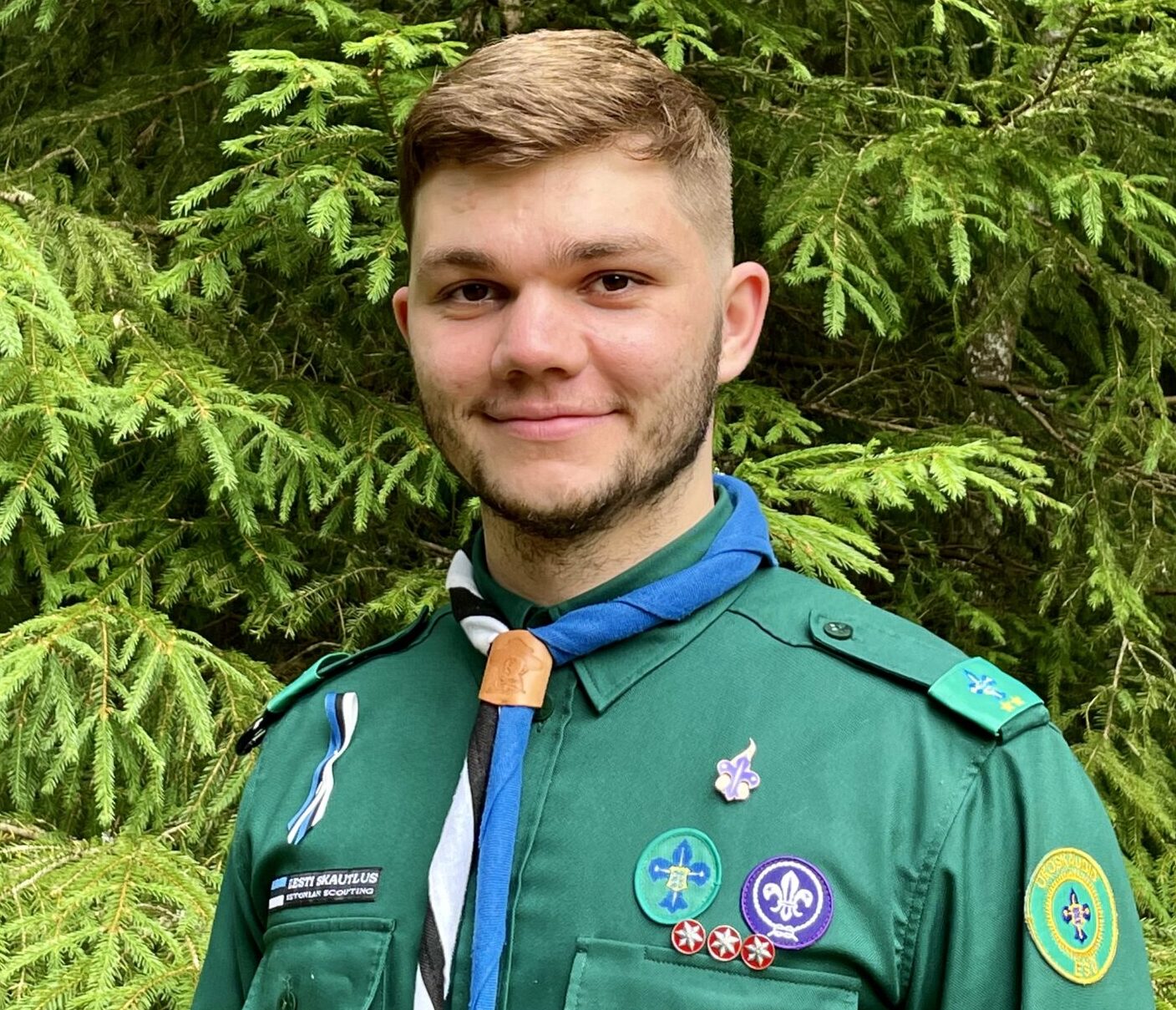
Commissioner of Programme: Peeter Aleksander Paju
Email: programm@skaut.ee
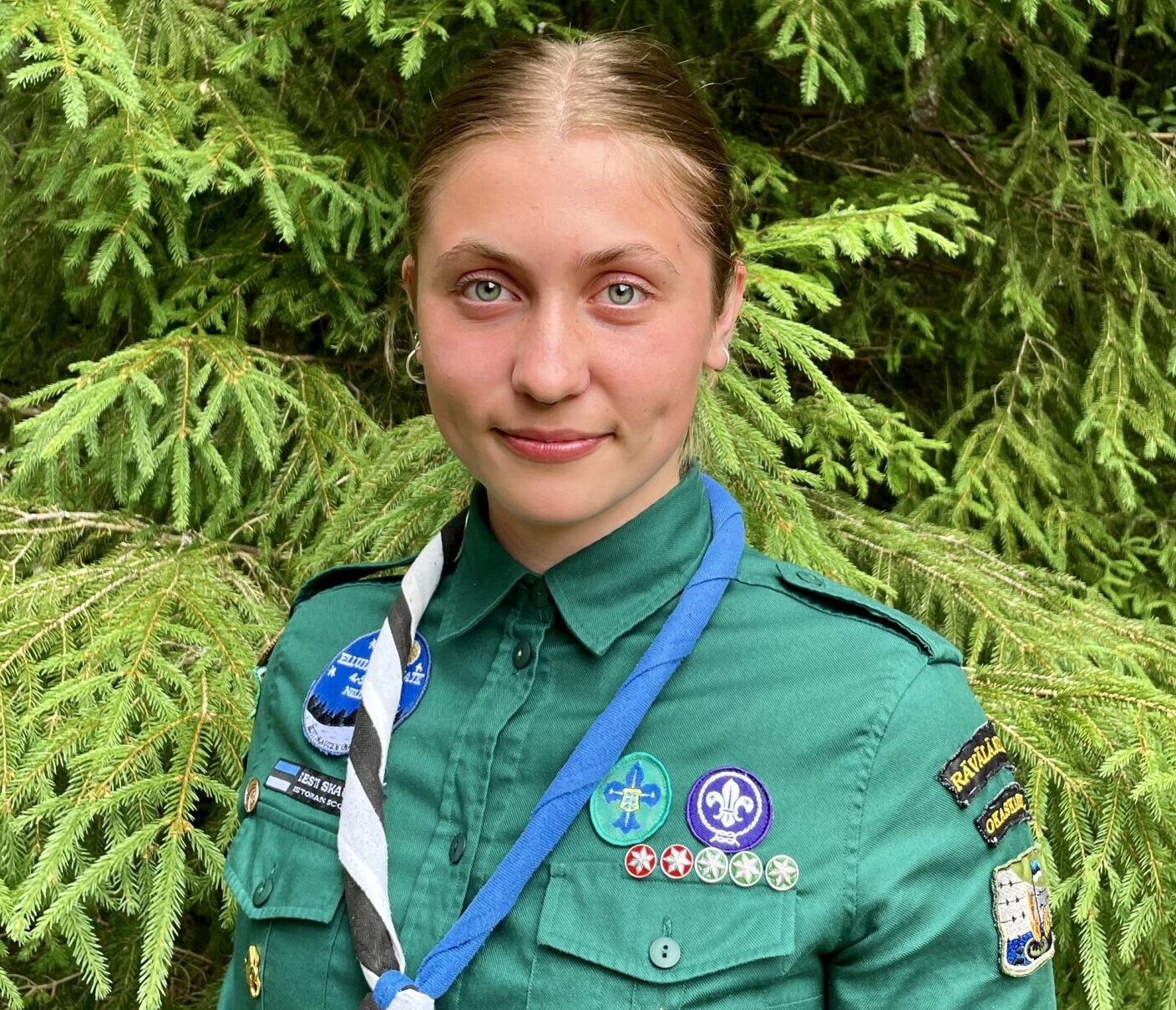
Commissioner of Communications: Luisa Viisileht
Email: suhtlus@skaut.ee
Media team:
Webshop team:
YouTube team:
Magazine “Eesti Skaut” team:
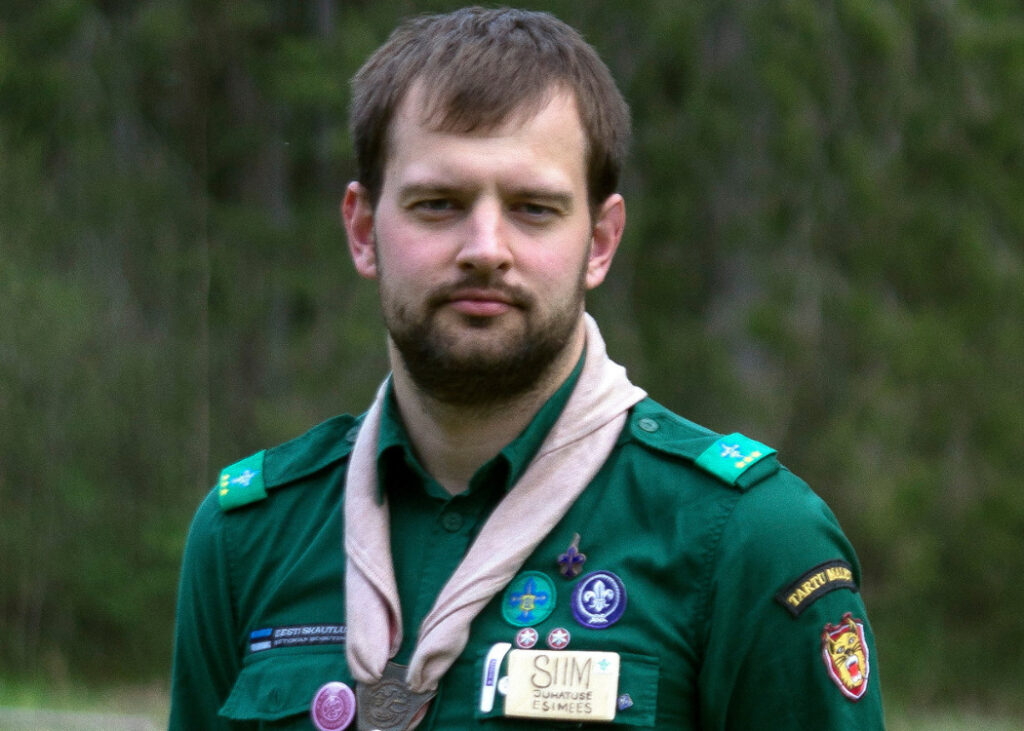
Chief Scout: Siim Maripuu
Phone number: 53 41 3600
Email: peaskaut@skaut.ee
Siim’s task is to mentor and support the new Chief Commissioner and the board members to help them perform well in his their representative roles.
